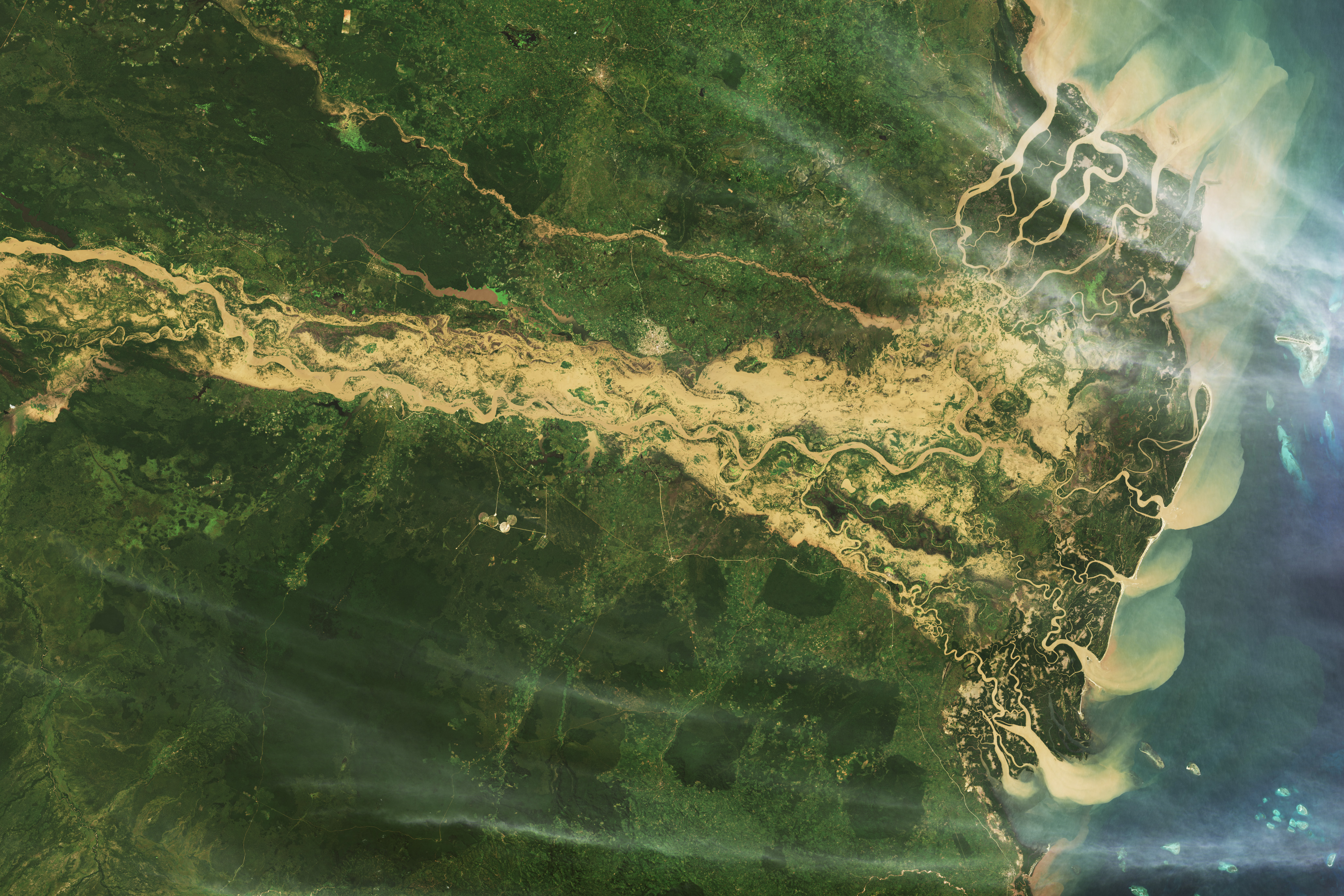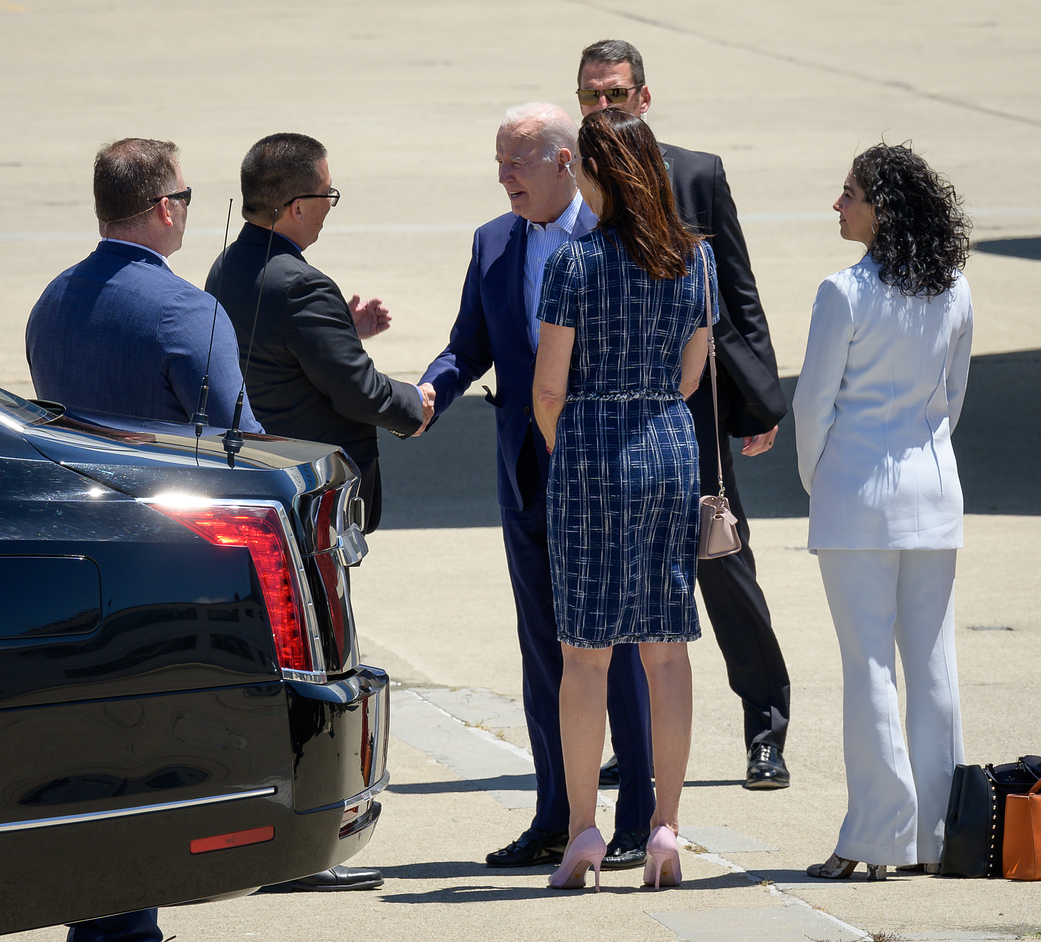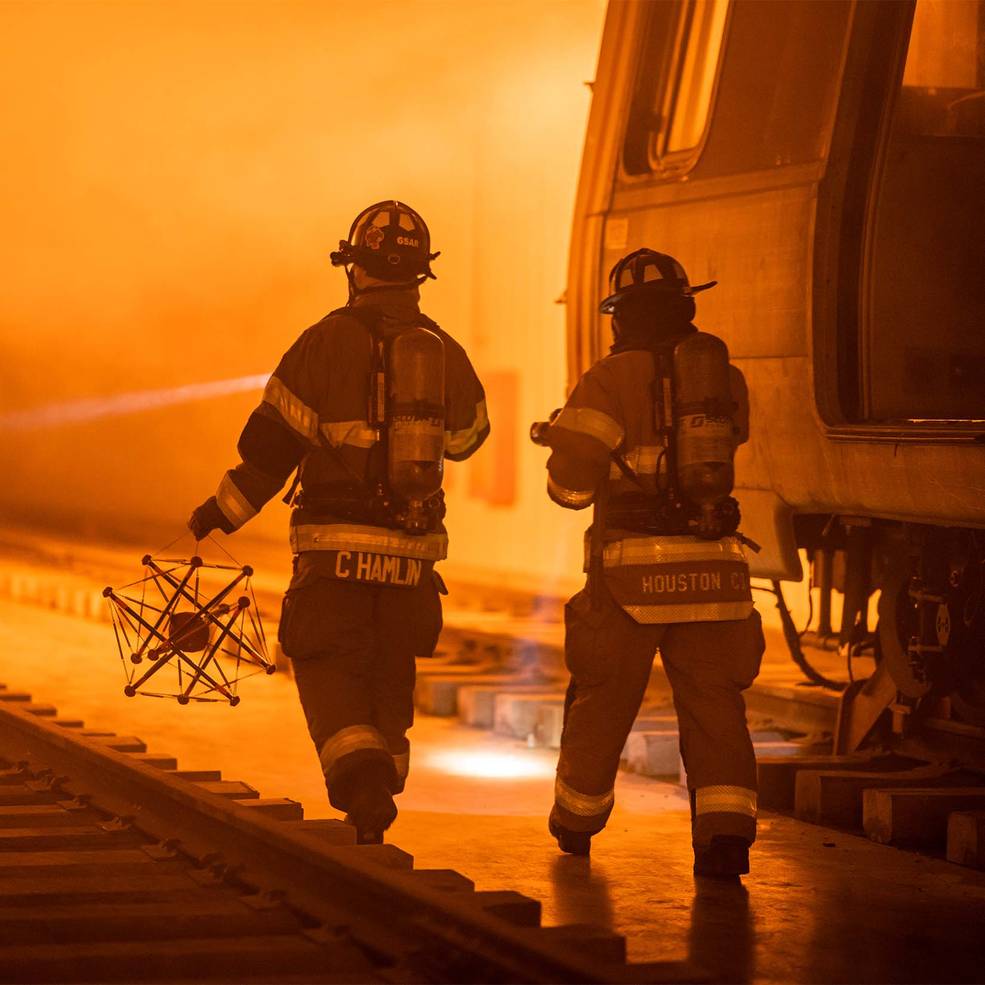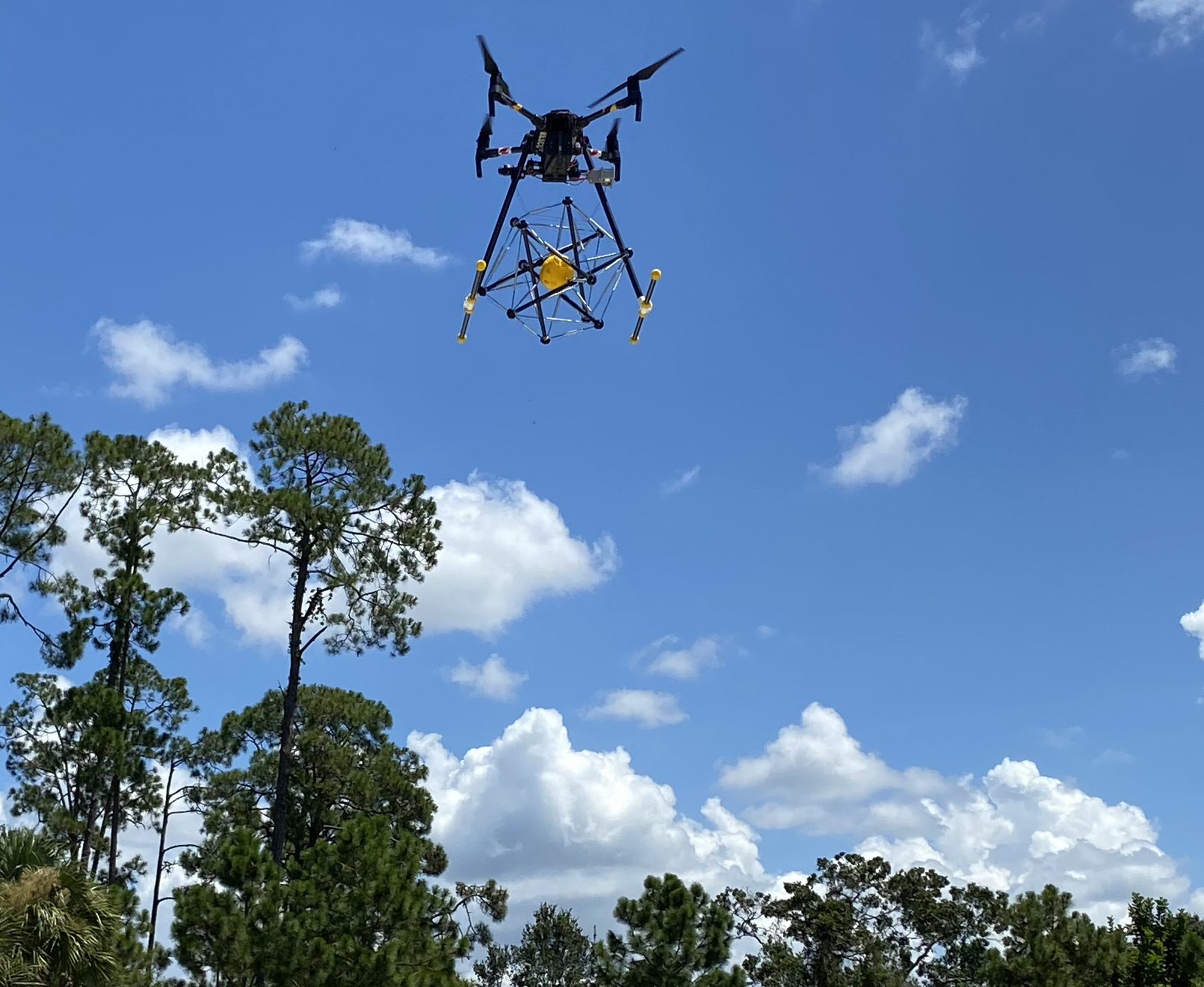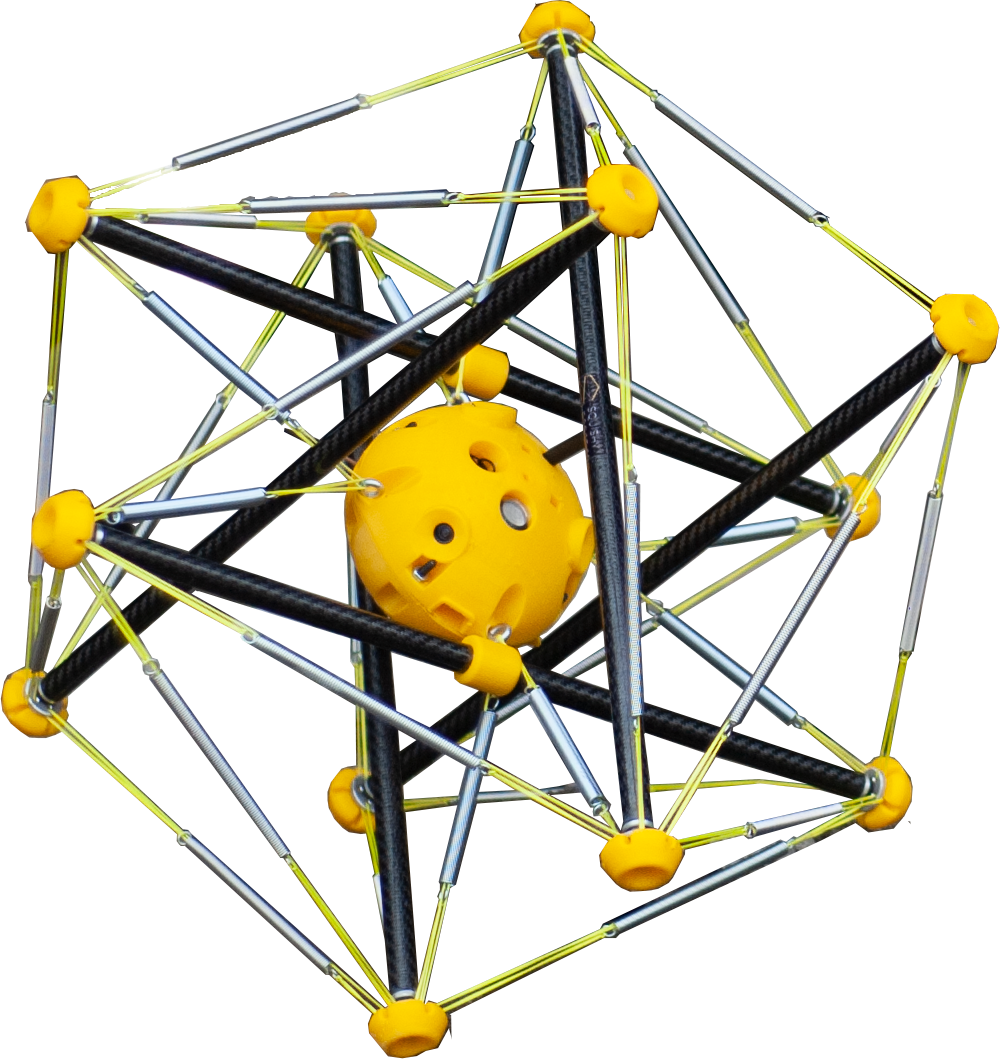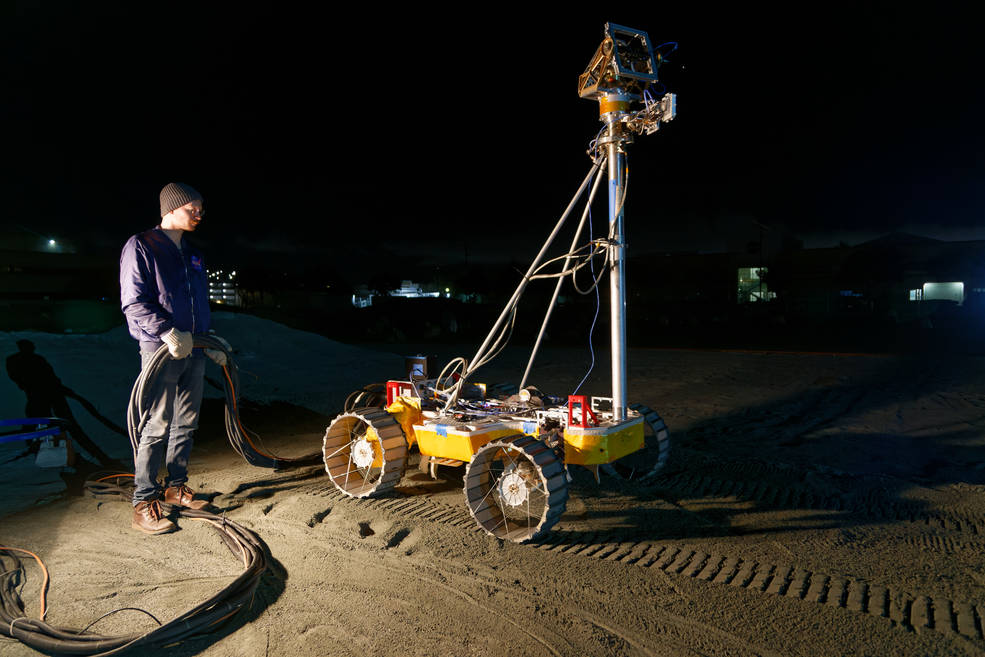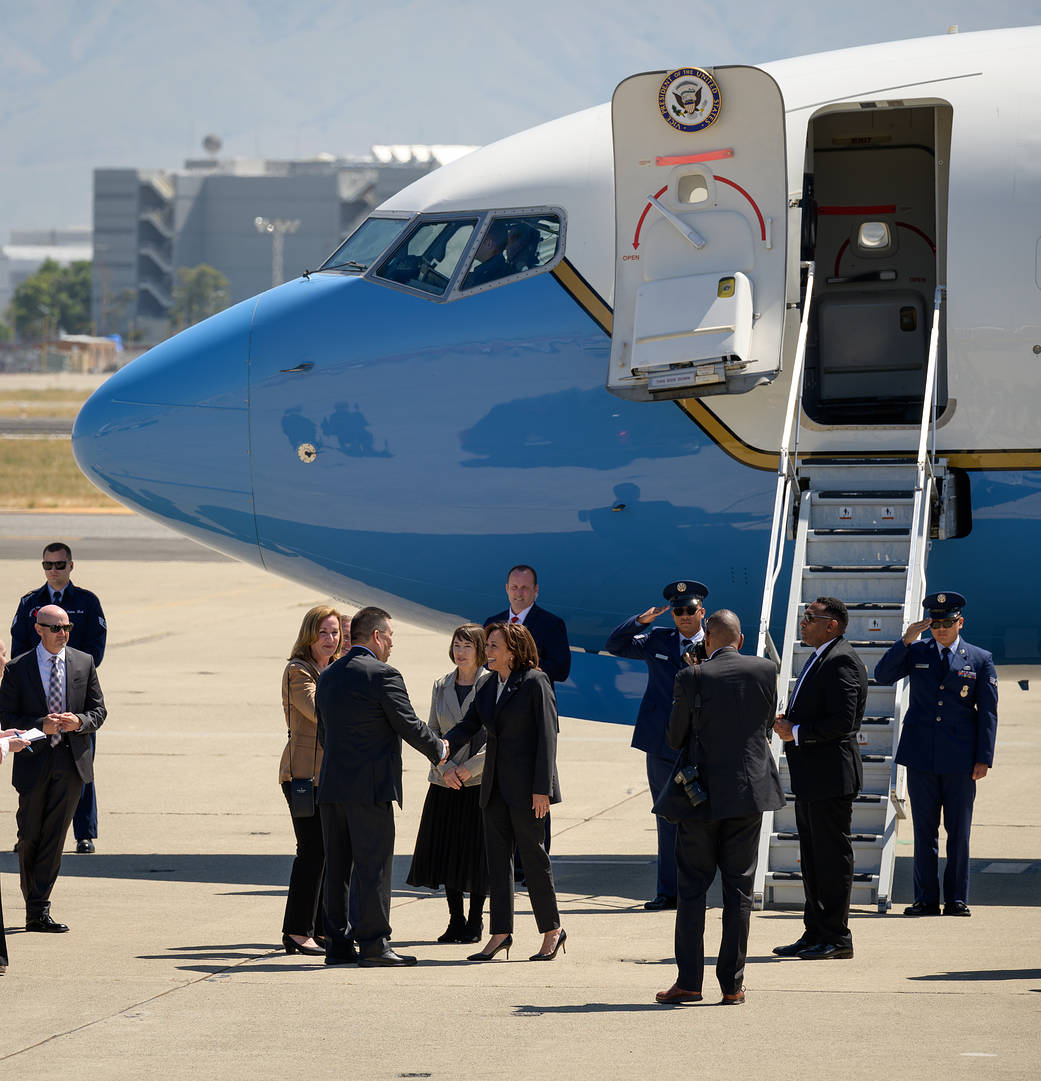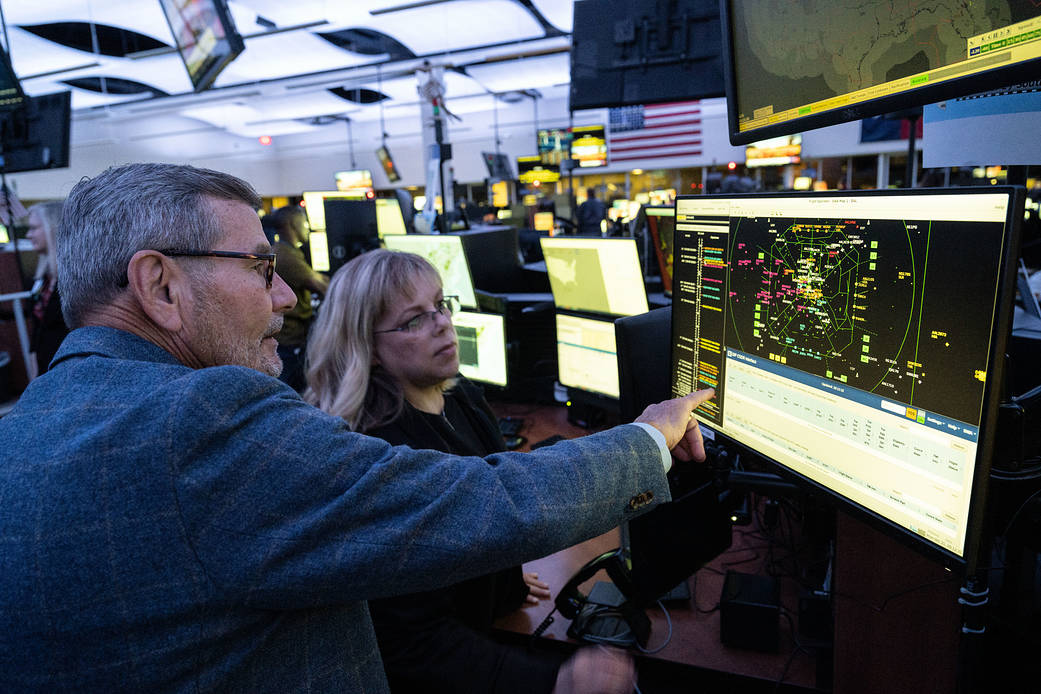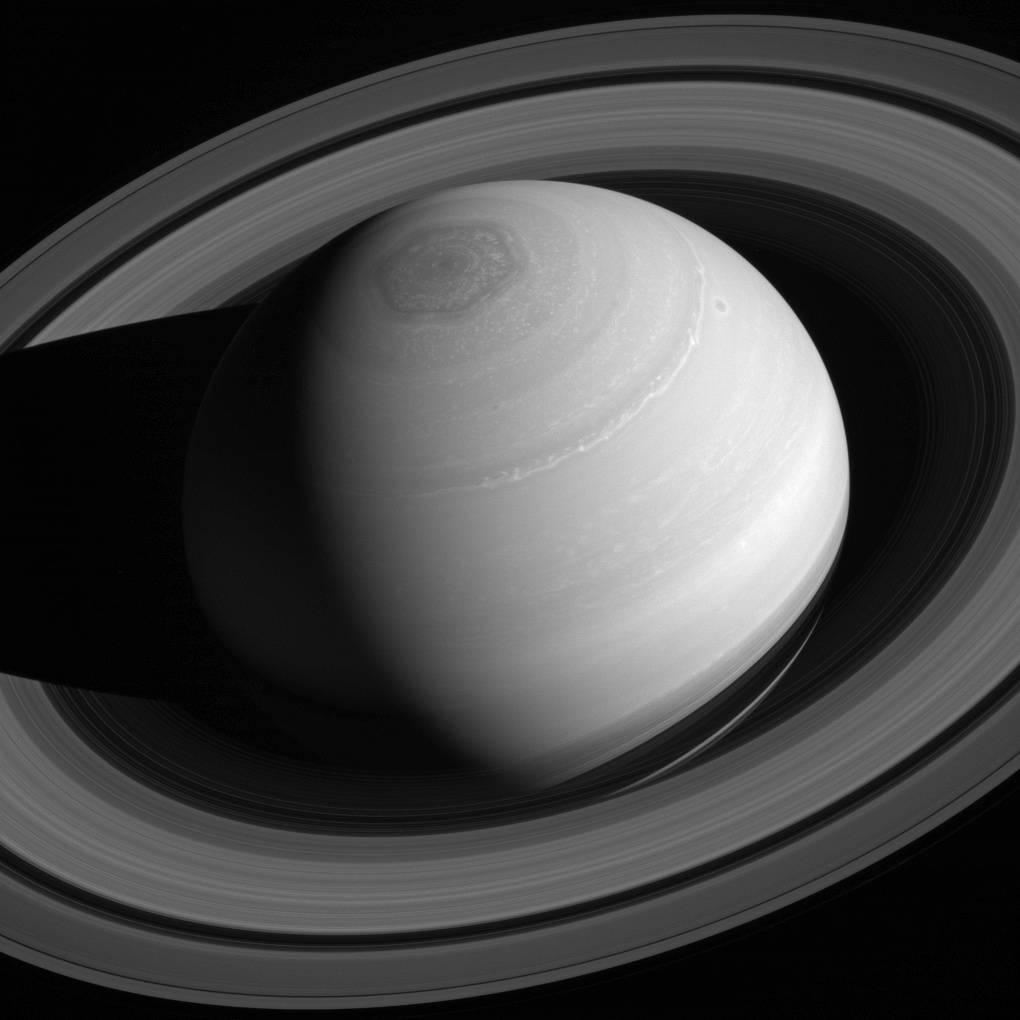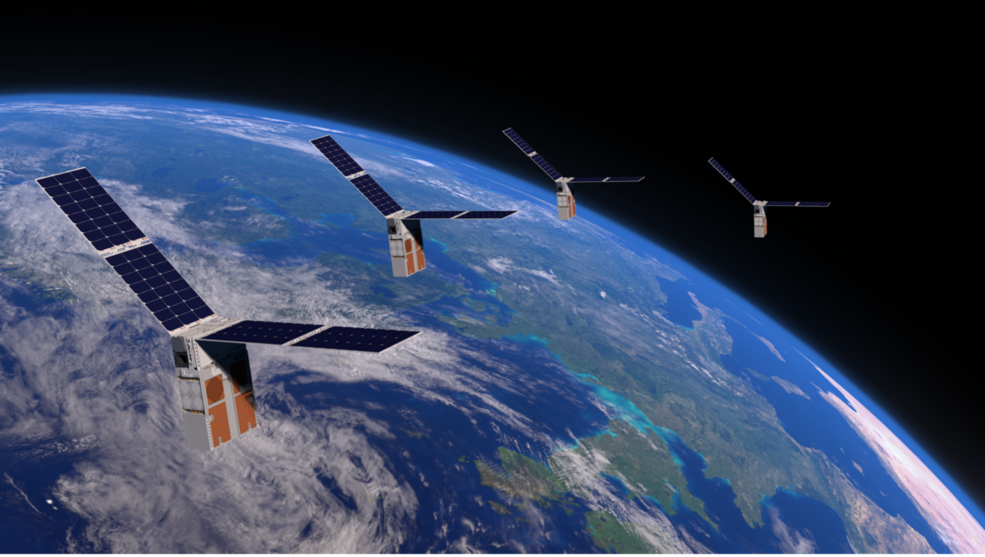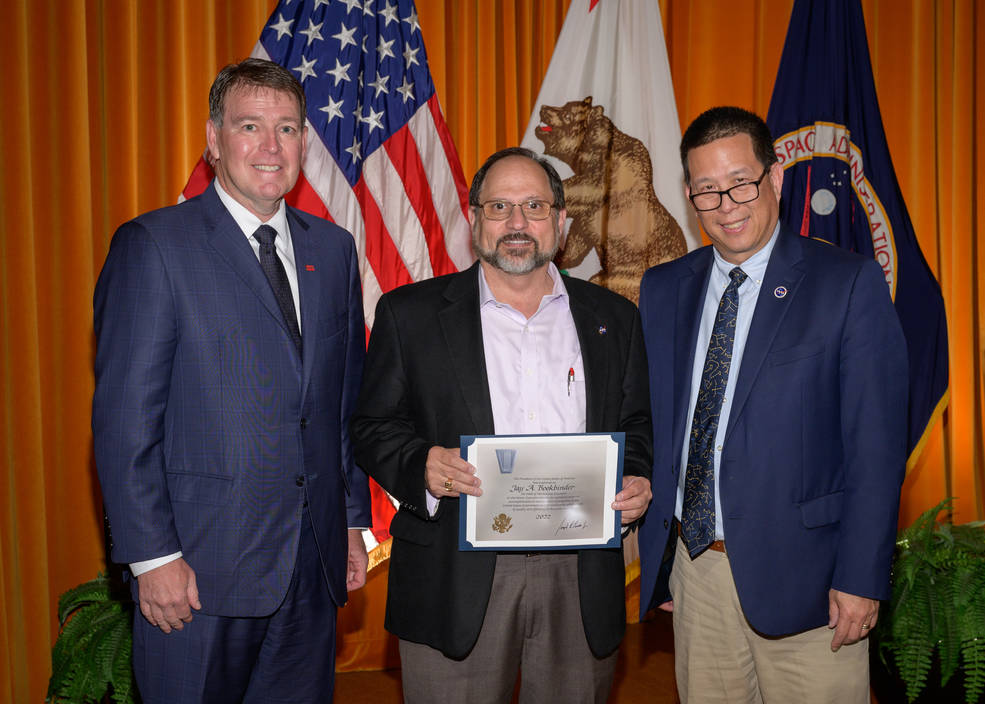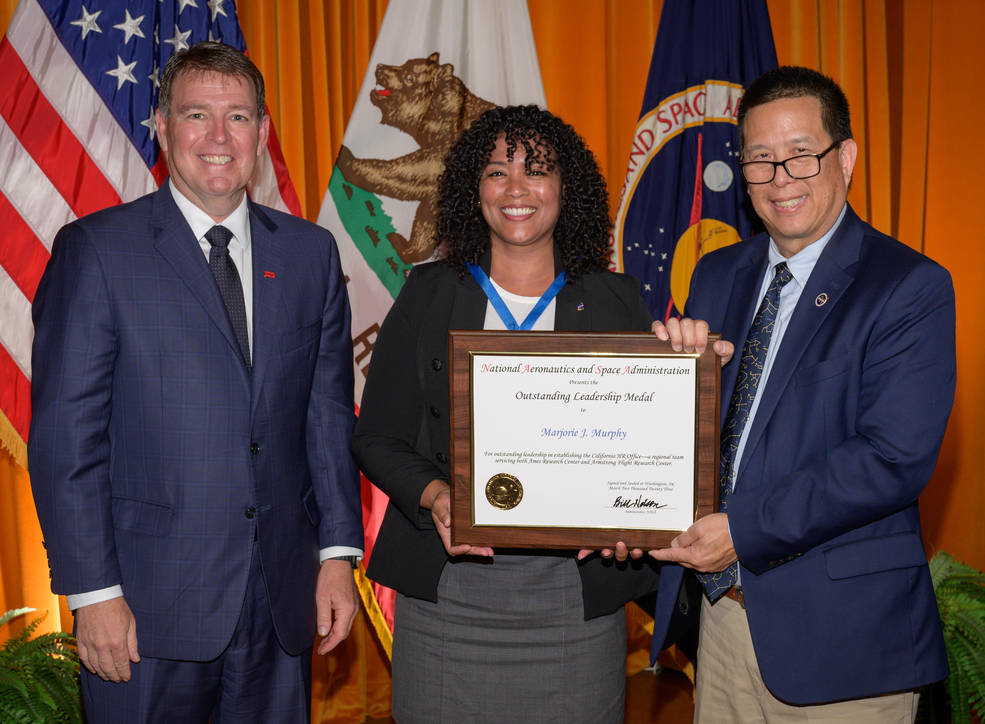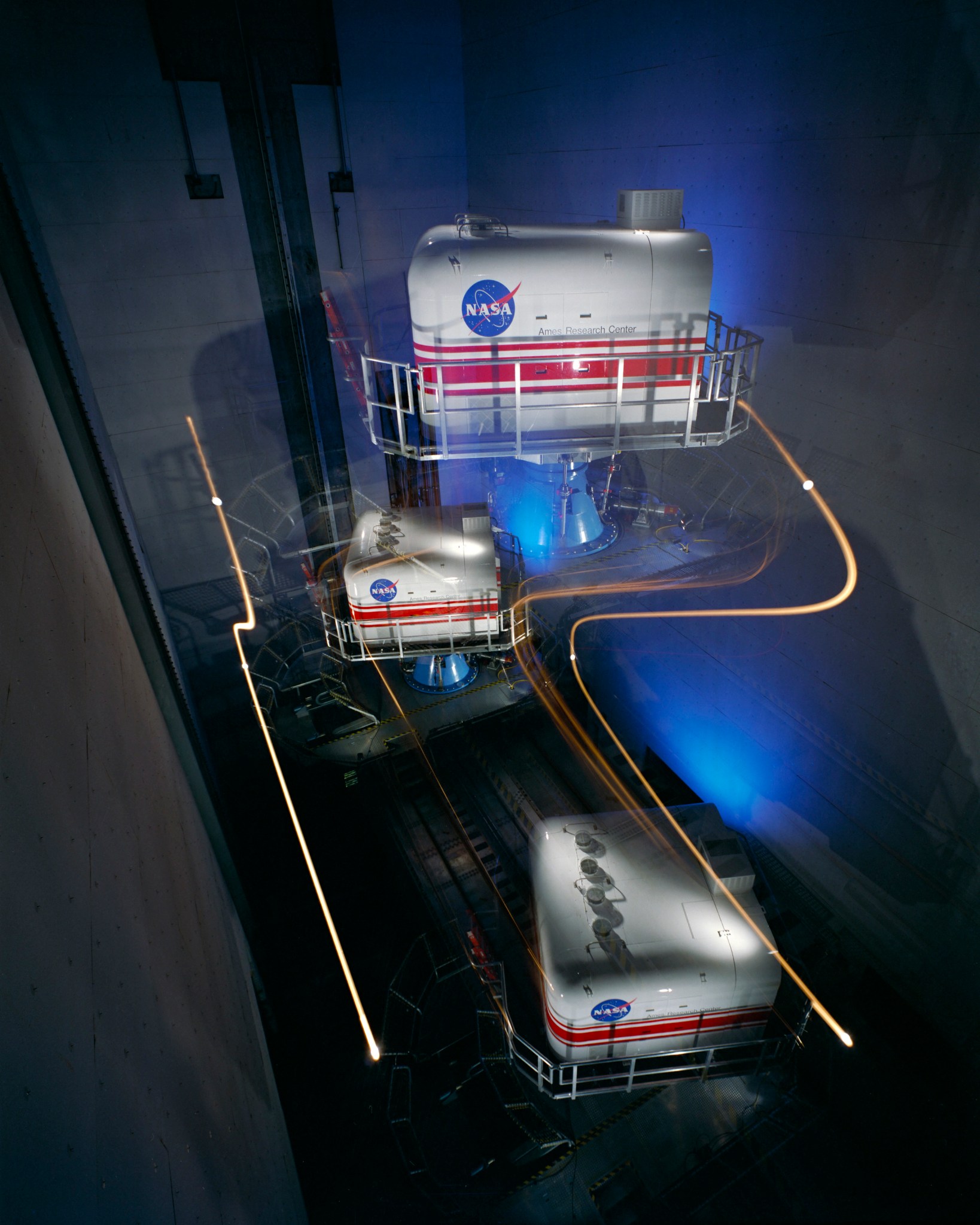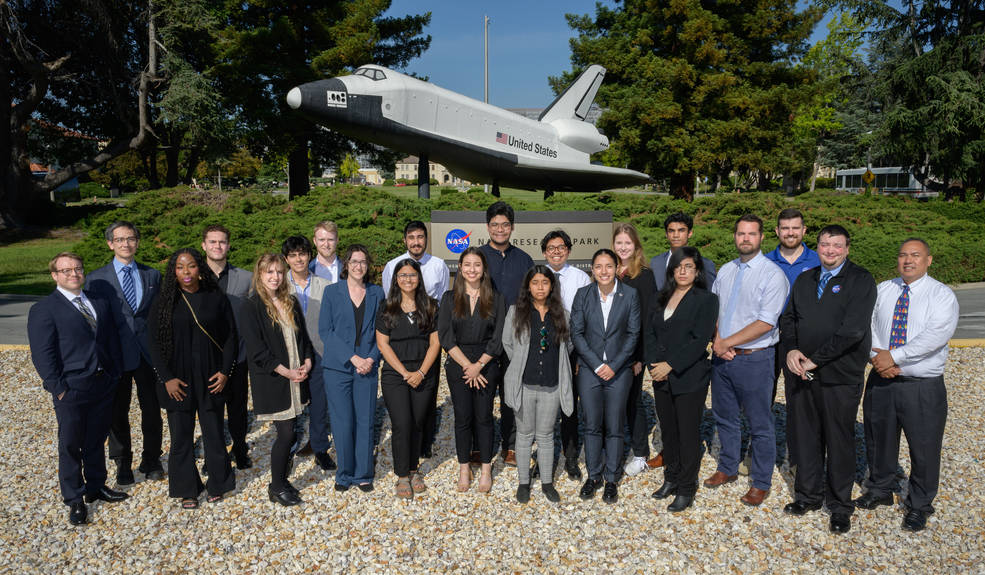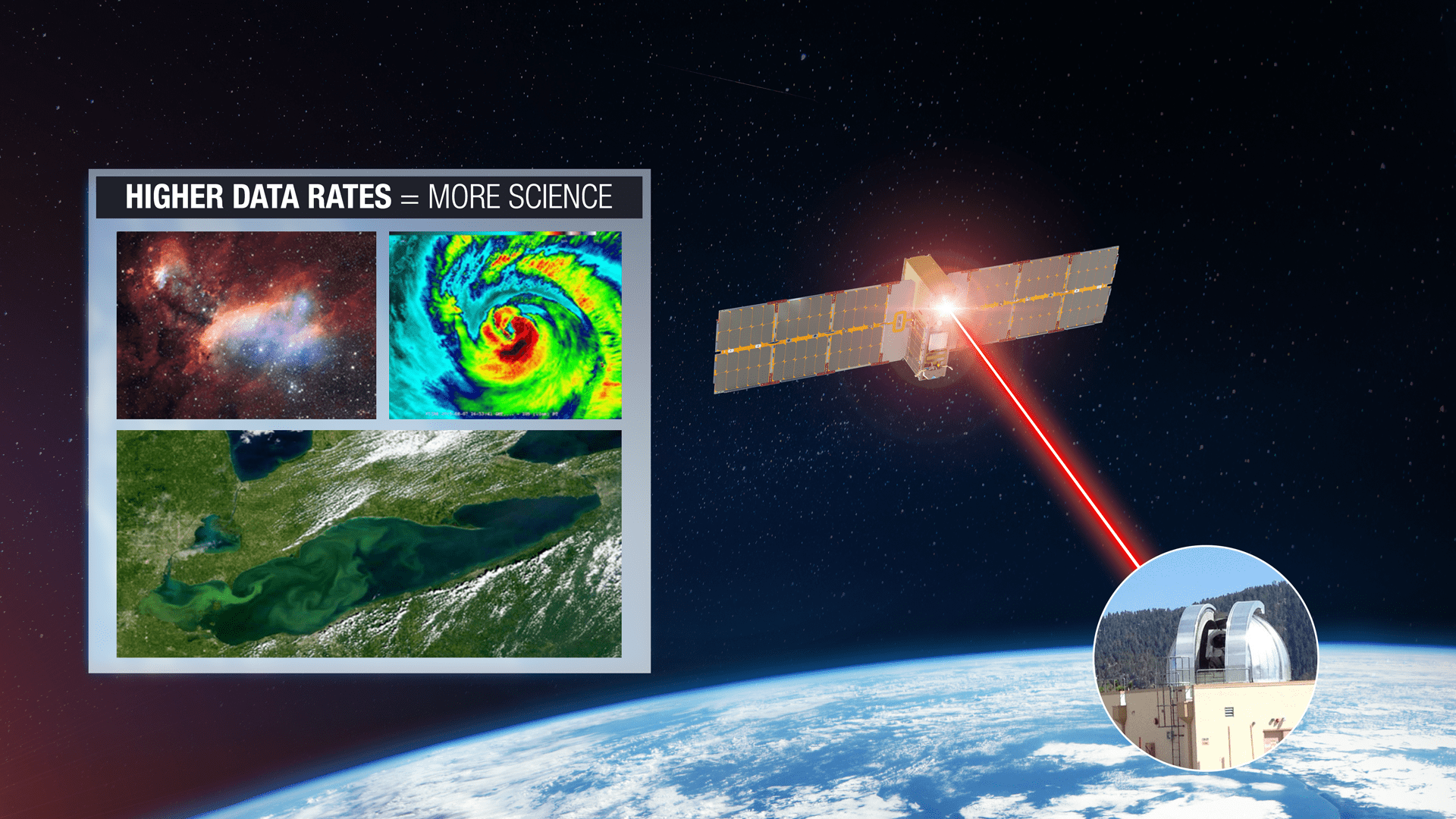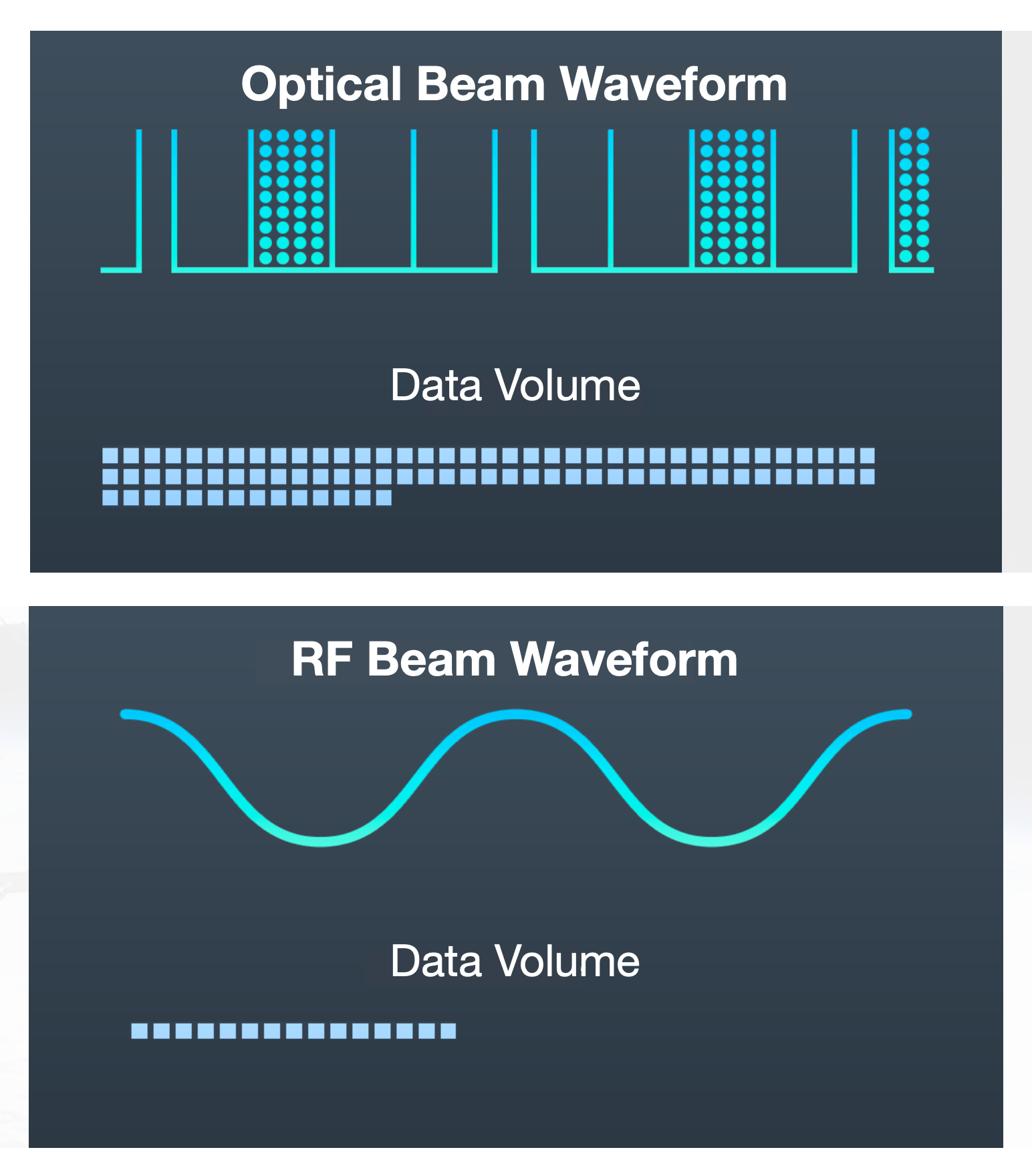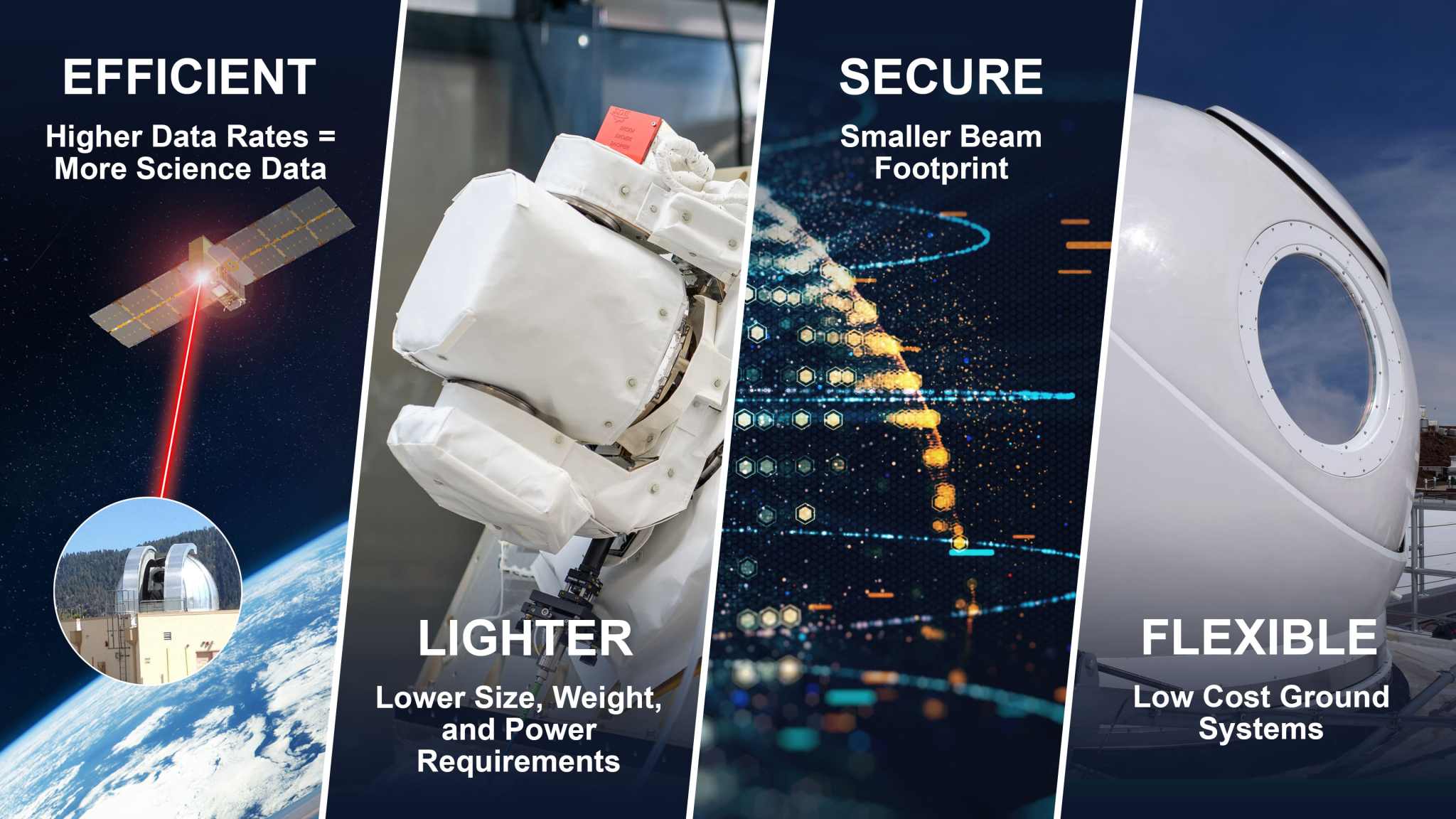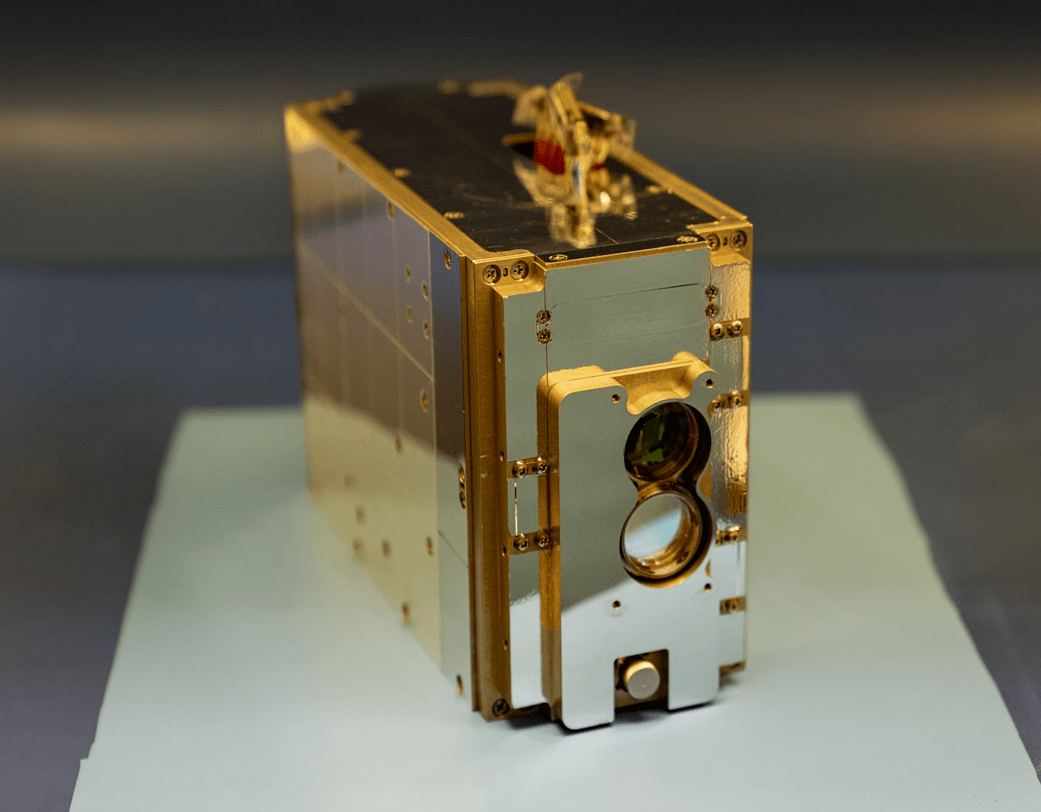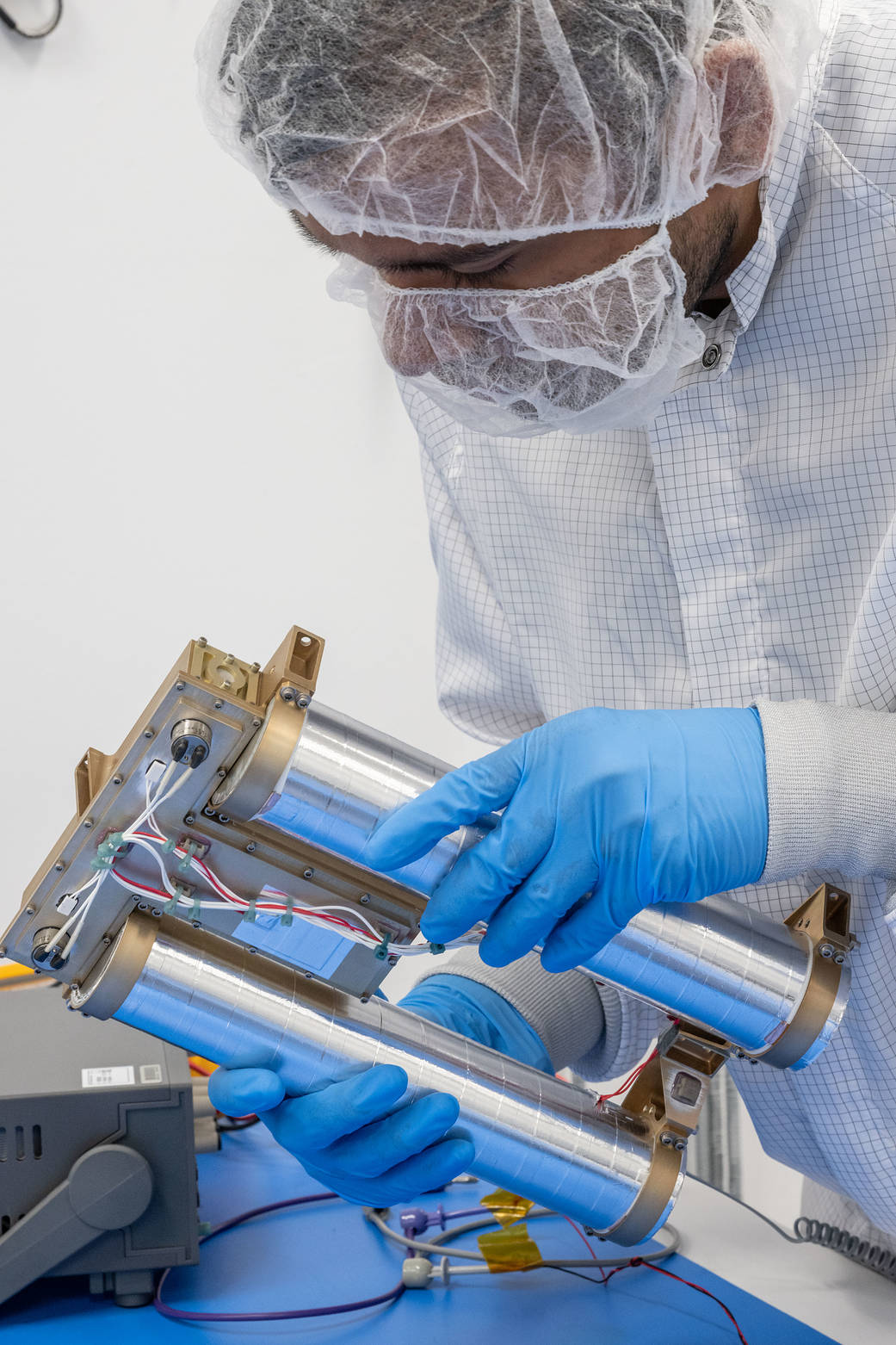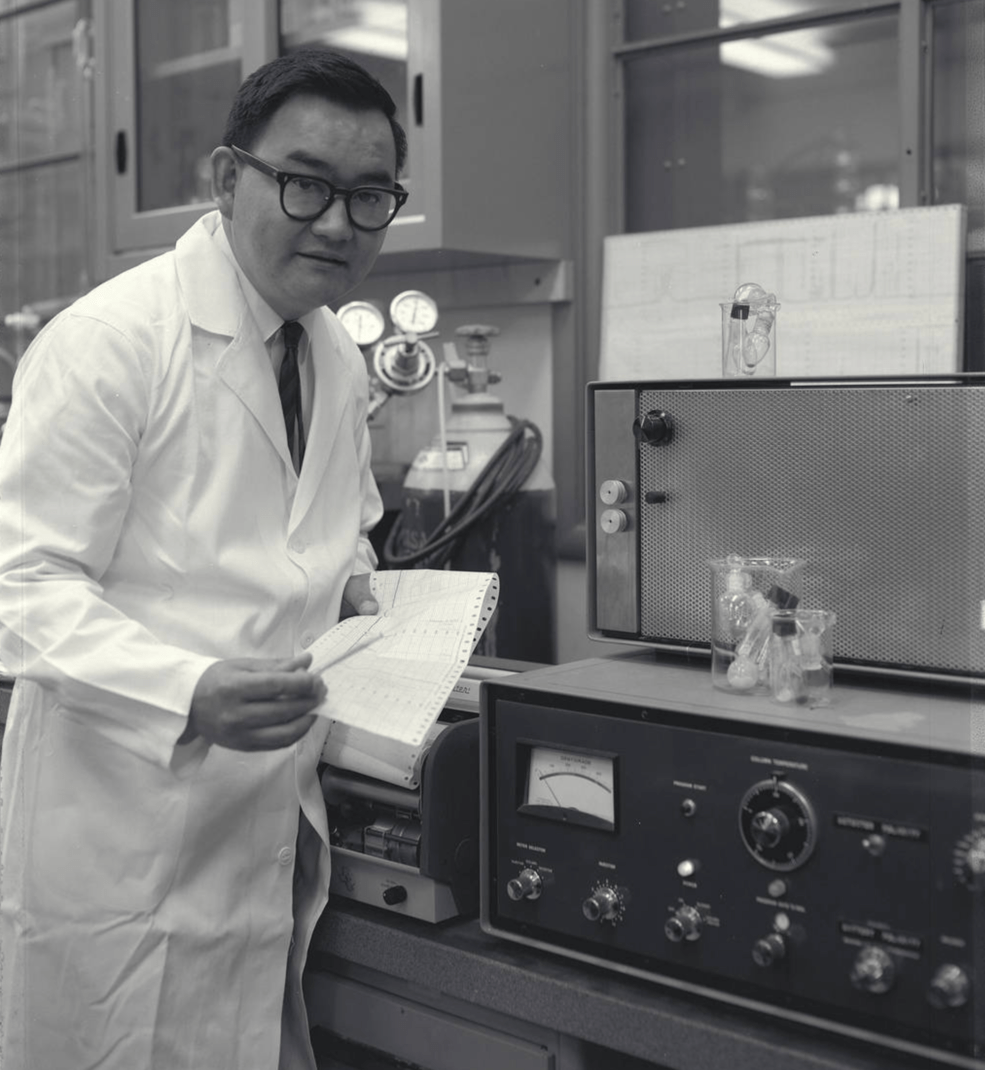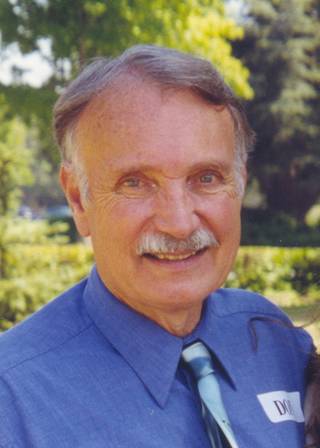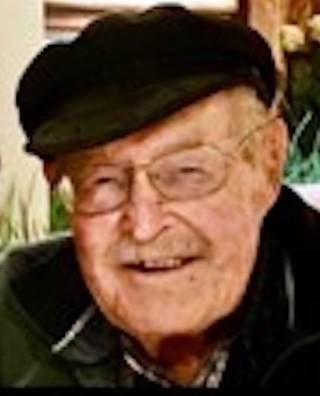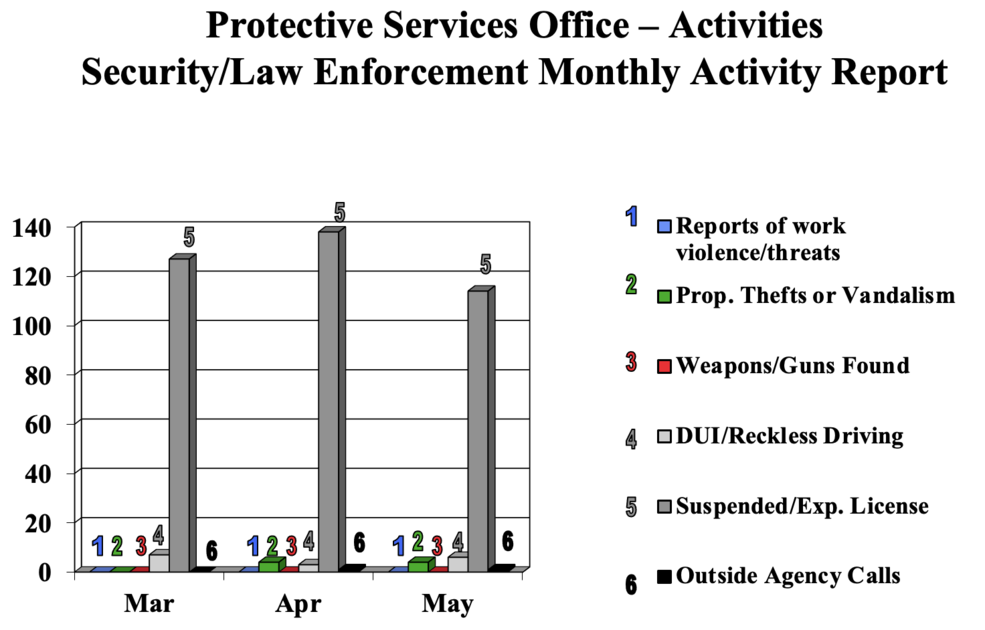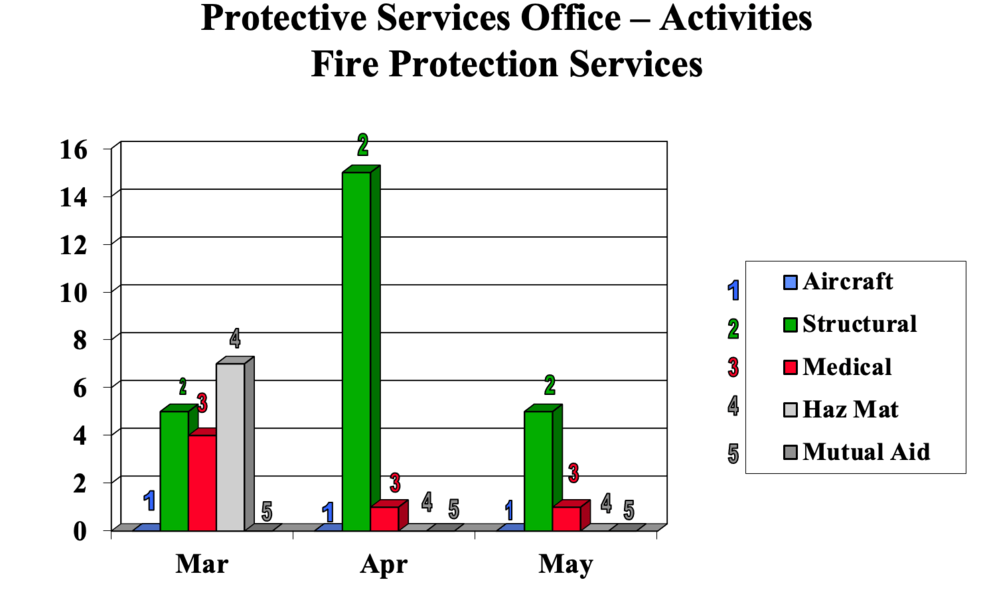President Biden Lands in Silicon Valley, Greeted by NASA Ames Director
NASA Employees March in San Francisco Pride 2023 Celebration
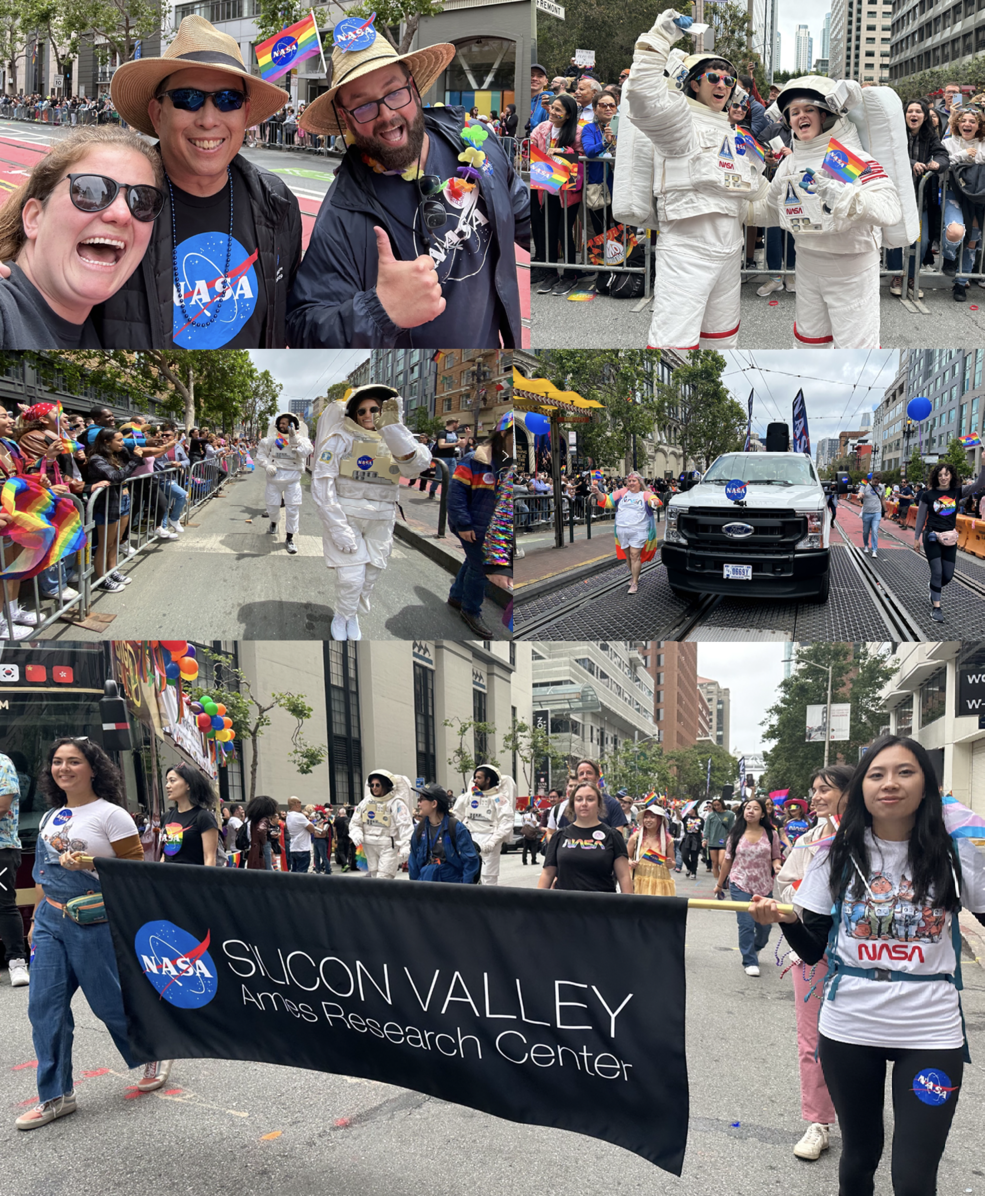
NASA-Developed Spherical Robots to the Rescue
by Rebecca Carroll
Dr. Alice Agogino was researching spherical, skeletal robots that might one day be dropped onto Mars or the Moon to collect information and conduct science, when she realized her NASA-funded technology could have terrestrial benefits too.
Reading a report on the dangers and death toll of disaster response, Agogino thought her robots, fitted with the right sensors, could gather data at the scenes of fires, crashes, and other disasters to help first responders assess dangers like toxic gas leaks and plan their approach.
We thought, wow, if we can do this on the Moon, we could do it on Earth and save some lives,” said Agogino, director of the Berkeley Emergent Space Tensegrities Lab at the University of California at Berkeley.
She went on to cofound Berkeley, California-based Squishy Robotics Inc. The company makes impact-resistant, customizable robots for public safety, military, and industrial uses.
Agogino’s robots look like ball-shaped skeletons of rods and elastic cables. She describes the structure as “a tension network” – if a robot is dropped, the impact is distributed across the network, dissipating the force, according to the principle of tensegrity.
The term tensegrity – short for tensile integrity – was coined in the 1960s by architect R. Buckminster Fuller, who popularized geodesic domes, which are also tensegrity structures.
For NASA, the ability to withstand the impact of a long drop is especially interesting, as is the ability of these structures to collapse into a small package during travel.
The agency awarded Agogino and her UC Berkeley lab Early Stage Innovations (ESI) funding in 2014 to research tensegrity robot mobility using gas thrusters.
The $500,000, multi-year, proof-of-concept ESI grants aim to accelerate the development of innovative space technologies that have significant potential. The funding is offered through the Space Technology Research Grants program, which supports academic researchers working on space-related science and technology.
Agogino and her team were designing probes that could drop from a planetary orbit or larger spacecraft, survive the drop carrying delicate sensors, and then roll and jump over rough terrain to perform missions and science on other worlds.
“Think about the Mars Curiosity and Perseverance rovers,” said Terry Fong, chief roboticist in the Intelligent Robotics Group at NASA’s Ames Research Center in California’s Silicon Valley.
Fong, who was NASA’s technical representative for Agogino’s grant, explained that the rovers had to be gently lowered to Mars’ surface with the elaborate Sky Crane system.
“With tensegrity robots, the robot itself is the landing device,” Fong said. “It could survive a fall from very high up and keep going.”
The tensegrity devices can be folded flat for travel — in fact, that’s how Agogino ships robots to customers. Once they unfurl, the instruments and sensors are suspended in the center, protected from the impact of a fall.
“So, you save on throwaway mass,” Fong said. “It’s expensive and difficult to launch mass into space, so you want more of it to be used beyond landing, on the surface with scientific instrumentation and other payloads.”
NASA also researched Earth science applications for tensegrity robots, which could monitor, for instance, a glacier that’s about to break off into the ocean.
“That’s the kind of place you would not want to send a person, because it’s very risky,” Fong said. “The whole surface could collapse. With a structure that could survive a drop but still be mobile afterwards, you would have a super instrument positioning system.”
On Earth or on other planets, tensegrity robots offer an easier way to place delicate instruments into difficult-to-reach areas. Indeed, that’s the principle behind Squishy Robotics.
Agogino and her team interviewed 300 first responders in a process known as customer discovery.
For these customers, Squishy Robotics now puts miniaturized chemical gas sensors inside the tensegrity robot that can be dropped by aircraft to take readings in an area before firefighters go in. Currently, the company only offers stationary robots, but Agogino and her team are working on mobile models.
The data these robots collect can inform firefighters’ decisions about whether to wear hazardous material gear, which can add up to an hour of prep time — a delay that’s only worthwhile if it’s necessary.
Squishy Robotics has worked with some of the largest fire departments, including Southern Manatee Fire and Rescue in Florida, the Tulsa Fire Department in Oklahoma, and the San Jose Fire Department in California. The company has also established reseller agreements with several distributors.
Agogino’s tensegrity robots could also help defuse bombs or monitor gas and electric lines.
Wildfire prevention is another emerging area for Squishy Robotics. Tensegrity robots could monitor high-risk areas, help authorities respond to reports, and ensure that smaller fires have been fully extinguished.
“The early detection of wildfires is critical,” Agogino says, “because so many of the wildfires that have become raging firestorms could have been prevented if they had been caught early.”
Agogino is now emeritus, having retired in December from Berkeley, which allows her to spend more time on Squishy Robotics.
NASA’s Fong said he was happy to see Agogino was able to spin off the tensegrity robot technology. “We believe these robots could serve unique purposes for space,” he said. “She obviously saw a way to also have a major impact on Earth.”
NASA has a long history of transferring technology to the private sector. The agency’s Spinoff publication profiles NASA technologies that have transformed into commercial products and services, demonstrating the broader benefits of America’s investment in its space program. Spinoff is a publication of the Technology Transfer program in NASA’s Space Technology Mission Directorate (STMD).
Engineers Test VIPER's, the Next Rover to Visit the Moon, Very Nimble Gimbal
by Rachel Hoover
As VIPER, NASA’s next Moon rover, wheels about atop Mons Mouton – a large flat-topped mountain on the Moon’s South Pole – one small but mighty piece of hardware will be critical for the team of rover drivers and scientists to send it commands, know where it is going, and receive valuable science data: a gimbal-pointed high-gain antenna.
VIPER has both a low-gain and high-gain antenna to transmit data to and receive data from the Deep Space Network (DSN) antennas on Earth. Its low-gain antenna sends radio waves at a low data rate, while its high-gain antenna transfers much more information (over 100 times more). Data is then transferred from the DSN to the Multi-Mission Operations and Control Center at NASA’s Ames Research Center in California’s Silicon Valley, where rover operations are based.
“Pointing VIPER’s high-gain antenna in the correct orientation is one of the most critical functions the rover has,” said Arno Rogg, rover systems engineer at Ames. “Without its antenna, the rover cannot receive commands while in motion on the Moon and cannot transmit any of its data back to Earth for scientists to achieve their mission goals.”
Why it Matters
VIPER is designed to use distributed computing, which allows engineers to download images and other data from the rover for fast processing, rather than having to rely only on the rover’s slower on-board computing.
“This opens up a process for off-planet science operations that enables us to be super responsive to the situation on the Moon as it is revealed,” said Dr. Zara Mirmalek, VIPER deputy science operations and integration lead at Ames. “The science team can react in near real time and influence where the rover moves to meet the mission’s science objectives.”
In order to transmit large amounts of data across the 240,000 miles that separate Earth and the Moon, VIPER will be equipped with an antenna that can send information along a very focused, narrow beam. With the exception of planned stops to take panoramas of its lunar surroundings, to use its drill, wait out occasional communication blackouts or periods of shadow at safe havens, VIPER will constantly be on the move. The rover will spend most of its time driving and using its suite of spectrometers and cameras to map the location and concentration of lunar water and other volatiles at the surface of areas of scientific interest –– which means it is essential for the rover to be able to constantly and precisely point its antenna while it moves.
“The rover is equipped with different sensors that work together and allow it to know where to point and tell the gimbal to adjust the antenna’s direction as many as 10 times every second, even while the rover might be bouncing over boulders and crater slopes,” said Rogg. “But knowing where to point is extremely complex.”
VIPER uses its onboard computer and a few different sensors to accurately and very frequently calculate its position on the Moon. One sensor is its star tracker – a sensitive camera that takes pictures of the star field above VIPER. By comparing the pictures to its built-in map of stars, the star tracker can determine which way VIPER is oriented. VIPER also uses a set of gyroscopes to track how quickly the rover is turning. Using the combined data, the rover commands the gimbal to make fine adjustments to compensate for the rover’s motion in order to keep the antenna always pointed at the Earth.
Flipping the Problem Around
But engineers were faced with a problem: How can such a system be tested on Earth? Their solution? Flip the problem around – and drive a prototype rover in California with an antenna pointed at the Moon. They recently completed the nighttime tests at the Roverscape at Ames using the latest prototype of the rover, known as Moon Gravitation Representative Unit 3 (MGRU3), and found both antenna and gimbal performed well.
“We found that the Moon stayed dead center even while the prototype performed a sprint drive over the largest rock in our Roverscape, which is one of the most challenging cases,” said Terry Fong, deputy manager of the VIPER rover. “We’re now even more confident the system will work on the Moon.”
NASA Ames Director Greets Vice President Kamala Harris During Her Arrival in Silicon Valley
Vice President Kamala Harris is greeted by NASA Ames Director Dr. Eugene Tu and elected officials, after arriving at Moffett Federal Airfield, located at Ames, on Monday, May 22.
During the vice president’s visit to the region, she delivered remarks at a local company on the CHIPS and Science Act supporting U.S. semiconductor research and manufacturing.
NASA Partners With Major U.S. Airlines to Save Fuel and Reduce Flight Delays
by Hillary Smith
NASA recently signed agreements with five major U.S. airlines to continue developing an air traffic decision-making tool that saved more than 24,000 pounds of jet fuel in 2022 for flights departing from Dallas-Fort Worth International Airport and Dallas Love Field Airport.
Over 2022, NASA’s Digital Information Platform (DIP) machine-learning tool allowed flight coordinators at the two Dallas airports with capabilities to reduce delays and save fuel. Using traffic predictions from the DIP-developed Collaborative Digital Departure Reroute (CDDR) tool, they were able to identify opportunities of more efficient, alternative takeoff routes, which reduced delays and saved fuel.
Now, DIP tools will be put to work with five new partner airlines:
- American Airlines
- Delta Air Lines
- JetBlue Airways
- Southwest Airlines
- United Airlines
Under five-year NASA Space Act Agreements with these airlines, DIP researchers working with the Federal Aviation Administration (FAA) will test a cloud-computing-based version of the CDDR tool.
CDDR aims to improve current air traffic operations at commercial airports by integrating air traffic and airspace restriction data from the FAA with flight-specific surface traffic data from the five airlines and two airports. The tool applies machine learning to this data in order to provide traffic predictions about future runway availability and estimated departure and arrival times.
All five airlines will collaborate with NASA to continue maturing the CDDR tool and identify additional opportunities to apply data-driven solutions that can improve flight planning and replanning operations.
“The abundance of digital aviation data provides opportunities for flight operators and air traffic controllers to achieve more sustainable operations,” said Dr. Gilbert Wu, DIP team lead at NASA’s Ames Research Center in California’s Silicon Valley. “Collaboration with airline partners allows the DIP team to identify these opportunities and apply state-of-the-art technical approaches such as CDDR for an operational demo that shows real-world benefits. If you fly out of the Dallas-Fort Worth International Airport or the Dallas Love Field Airport on any day, your flight may get off the surface faster or fly to your destination sooner because of CDDR.”
To kick off the partnerships, the DIP team recently held an in-person meeting with the airline partners at Dallas-Fort Worth International Airport. Richard Wahls, mission integration manager for the Sustainable Flight National Partnership at NASA Headquarters in Washington, shared the agency’s vision for the partnership. Airline partners observed CDDR in action and listened to field users’ feedback on how the tool realizes operational benefits and improves situational awareness.
The NASA DIP team aims to continue to demonstrate the benefits of CDDR at major airports throughout the country and with multiple airlines, in collaboration with the FAA. This digital tool is designed to be scalable and adaptable across airspaces, and can be adopted by many different users, including cargo and commercial flight operators.
CDDR builds on the capabilities developed by NASA’s Airspace Technology Demonstration 2 project at Charlotte Douglas International Airport and Dallas-Fort Worth International Airport. The field evaluation at Charlotte Douglas saved more than 1 million gallons of jet fuel, 23.2 million pounds of carbon dioxide emissions, and more than 6,000 hours of engine run time from 2017-2021. The Airspace Technology Demonstration 2 project continues to run at Charlotte Douglas with FAA support.
However, the CDDR tool goes beyond the approach used by Airspace Technology Demonstration 2, incorporating machine-learning based predictive services, cloud-based infrastructure, and other innovations.
DIP is a subproject of NASA’s Air Traffic Management (ATM-X) project and is led out of Ames. DIP’s work and partnerships contribute to the agency’s Sustainable Flight National Partnership efforts.
Three NASA Ames Studies Say Saturn's Rings are Young and Ephemeral
by Abigail Tabor and Aaron McKinnon
While no human could ever have seen Saturn without its rings, in the time of the dinosaurs, the planet may not yet have acquired its iconic accessories – and future Earth dwellers may again know a world without them.
Three recent studies by scientists at NASA’s Ames Research Center in California’s Silicon Valley examine data from NASA’s Cassini mission and provide evidence that Saturn’s rings are both young and ephemeral – in astronomical terms, of course.
The new research looks at the mass of the rings, their “purity,” how quickly incoming debris is added, and how that influences the way the rings change over time. Put those elements together, and one can get a better idea of how long they’ve been around and the time they’ve got left.
Although all four giant planets have ring systems, Saturn’s is by far the most massive and impressive. Scientists are trying to understand why by studying how the rings have formed and how they have evolved over time. Three recent studies by NASA researchers and their partners provide evidence that the rings are a relatively recent addition to Saturn and that they may last only another few hundred million years.
The rings are almost entirely pure ice. Less than a few percent of their mass is non-icy “pollution” coming from micrometeoroids, such as asteroid fragments smaller than a grain of sand. These constantly collide with the ring particles and contribute debris to the material circling the planet. The rings’ age has been hard to pin down, because scientists hadn’t yet quantified this bombardment in order to calculate how long it must have been going on.
Now, one of the three new studies gives a better idea of the total arrival rate of the non-icy material and, thus, how much it should have “contaminated” the rings since their formation. This research, which was led by the University of Colorado, Boulder, also indicates the micrometeoroids aren’t coming in as fast as scientists thought, which means Saturn’s gravity can pull the material more effectively into the rings. These lines of evidence add up to say the rings could not have been exposed to this cosmic hailstorm for more than a few hundred million years – a small fraction of the 4.6-billion-year age of Saturn and the solar system.
Backing up this conclusion is the second paper, led by Ames, which takes a different angle on the constant battering of the rings by tiny space rocks. The study’s authors identified two things that have been largely neglected in research. Specifically, they were looking at the physics governing the long-term evolution of the rings and found that two important elements are micrometeoroid bombardment and the way debris from those collisions gets distributed within the rings. Taking these factors into consideration shows the rings could have reached their current mass in just a few hundred million years. The results also suggest that, because they are so young, they most likely formed when unstable gravitational forces within Saturn’s system destroyed some of its icy moons.
“The idea that the iconic main rings of Saturn might be a recent feature of our solar system has been controversial,” said Jeff Cuzzi, a researcher at Ames and co-author on one of the recent papers, “but our new results complete a trifecta of Cassini measurements that make this finding hard to avoid.” Cuzzi also served as the Cassini mission’s interdisciplinary scientist for Saturn’s rings.
Saturn, then, may have been around more than 4 billion years before adopting its current look. But how much longer can it count on sporting the beautiful rings we know today?
The Cassini mission discovered the rings are losing mass quickly, as material from the innermost regions falls into the planet. The third paper, also led by Indiana University, quantifies for the first time how fast ring material is drifting in this direction – and meteoroids, again, play a role. Their collisions with existing ring particles and the way the resulting debris gets hurled outward combine to create a sort of conveyor belt of motion carrying ring material in toward Saturn. By calculating what all that jostling of particles means for their eventual disappearance into the planet, the researchers arrive at some tough news for Saturn: it may lose its rings in the next few hundred million years.
“I think these results are telling us that constant bombardment by all this foreign debris not only pollutes planetary rings, it should also whittle them down over time,” said Paul Estrada, a researcher at Ames and co-author of all three studies. “Maybe Uranus’ and Neptune’s diminutive and dark rings are the result of that process. Saturn’s rings being comparatively hefty and icy, then, is an indication of their youth.”
Young rings but – alas! – relatively short-lived, as well. Instead of mourning their ultimate demise, though, humans can feel grateful to be a species born at a time when Saturn was dressed to the nines, a planetary fashion icon for us to behold and study.
Satellite Swarms for Science ‘Grow up’ at NASA Ames
by Abigail Tabor
Teamwork makes the dream work, and at NASA that doesn’t apply only to humans. Researchers at NASA’s Ames Research Center are developing satellite swarms, which are groups of spacecraft working together as a unit, without being managed individually by mission controllers. A swarm’s ability to perform autonomously will make new types of science and exploration possible, particularly as they venture farther into deep space.
Ames’ work on swarm technologies has been underway for decades. This summer, swarm science will reach a major milestone as NASA launches the Starling mission into space. It will test technologies that let four spacecraft operate in a coordinated manner without resources from the ground. And the results of Starling’s experiments will be of great interest to researchers at Ames who, right now, are preparing a future swarm mission to study the Sun.
The Road to Successful Swarms
A swarm is not to be confused with a constellation, although both refer to a group of spacecraft working toward a common goal. If you’re operating a lot of spacecraft individually, you’ve got a constellation. While useful in certain scenarios, scaling up their numbers can make costs and mission complexity skyrocket.
Contrast that with a multi-talented, self-coordinating swarm. These spacecraft know how to communicate with each other, monitor and maintain their relative spacing, and maneuver to get where each needs to be. They’ll be able to collect data as a group, deciding which member of the team is best placed to take the optimal measurement and which should relay that data to Earth. This greatly simplifies the job of ground controllers who would otherwise need to command each spacecraft to meet a mission’s science objectives.
“In the past, that couldn’t be done affordably because we had to control each spacecraft individually,” said Butler Hine, a flight project manager at Ames. “But the emergence of small satellite technologies gave us new possibilities and a chance to change the way we operate them.”
Ames became a pioneer in the use of CubeSats and small satellites (SmallSats) to run innovative, cost-effective missions, testing technologies and performing biology experiments in space. Once CubeSats and SmallSats had matured, Hine became what he jokingly calls “the swarm czar.” His job was to create a roadmap of swarm technologies, identifying those already in existence as well as the missing technologies Ames would need to invest in to make swarm science missions a reality. He looked at core technologies Ames was investigating and helped plot a course to further investments to make swarm science missions a reality.
An early example of swarm coordination was the Nodes mission. In May 2016, the project put two satellites into Earth orbit to test their ability to communicate and negotiate which would downlink their data to mission control on the ground.
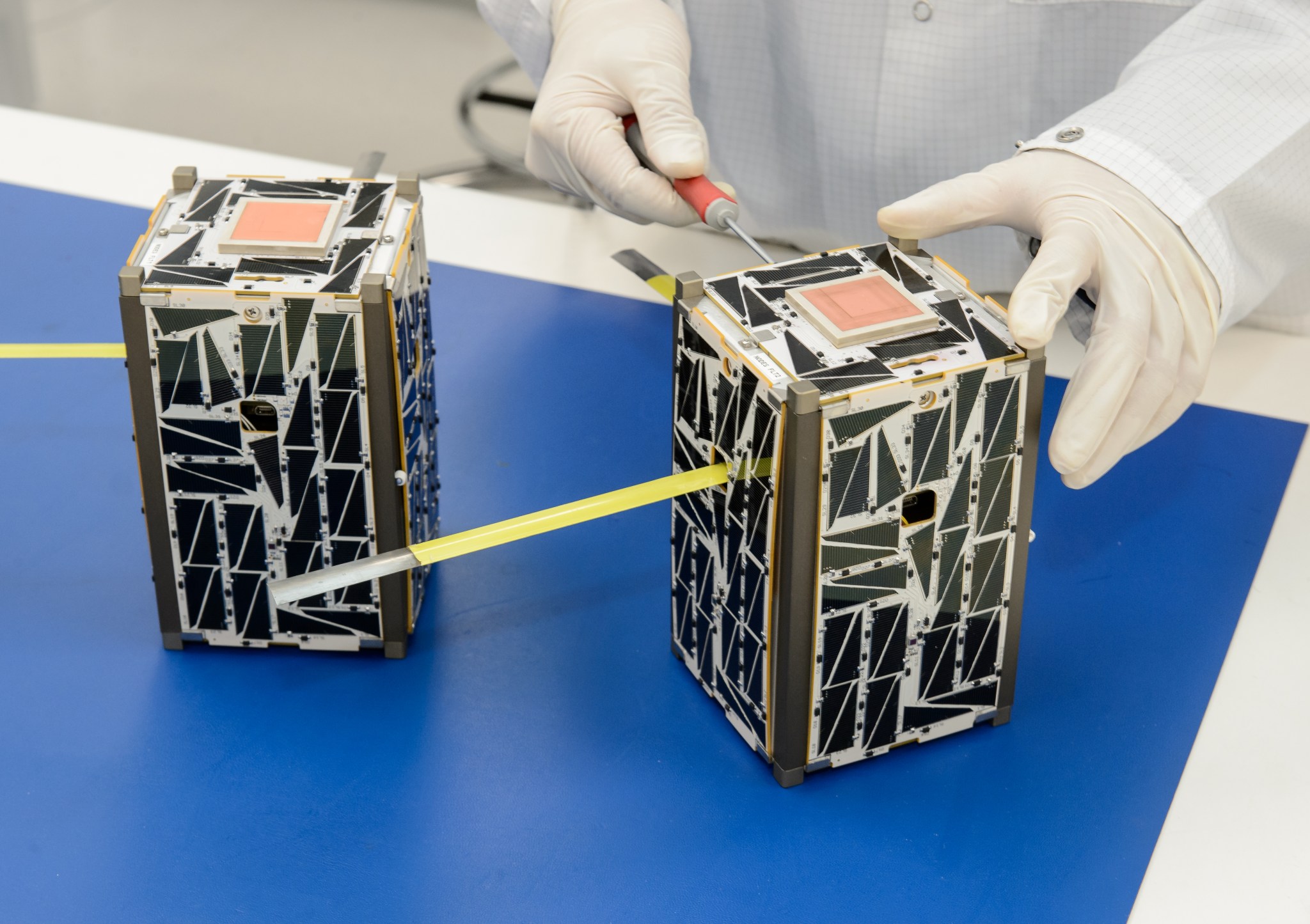
Two spacecraft a very small swarm make. But Nodes marked an important step. After all, good communication is key to the success of any team.
Building on that foundation, researchers at Ames developed the Distributed Spacecraft Autonomy project. DSA is maturing technologies critical for future swarms via simulation studies and by launching spacecraft. It will give a swarm the ability to plan and schedule for itself which operations the satellites conduct under different conditions. The swarm could self-determine when and where the most fruitful science observations should be made and delegate the job to the most appropriate individual at a given time. The DSA team’s virtual simulations to test out their swarming algorithms included operating 100 SmallSats in a coordinated fashion. Soon, DSA will be tested in space for the first time by all four Starling spacecraft.
These shared planning abilities have deep roots at Ames, particularly in aeronautics and human spaceflight research. For example, Ames leads NASA’s Astrobee project, a set of free-floating robots aboard the International Space Station that are learning to coordinate and perform support tasks without astronaut intervention.
Swarms Enabling Science
The farther we reach into the solar system with cooperative teams of spacecraft, the more important their autonomy will become. The time it takes for communication signals to travel and constraints on data bandwidth make direct control of multiple deep-space satellites impractical. And swarms provide new opportunities, such as positioning multiple small spacecraft to function as one very large observatory, like a telescope with a huge field of view.
“Swarms give you a lot of additional capabilities,” said Howard Cannon, Starling’s project manager at Ames. “They let you make multi-point science measurements. They’re more robust, thanks to the redundancy of multiple spacecraft. And since they can react quickly and autonomously to the data they collect, they can say, ‘Oh, there’s something interesting! I need to go look at that.’”
Those qualities will certainly be appreciated on Butler Hine’s latest effort. Today, he is the project manager for HelioSwarm, a mission managed at Ames that will send a swarm to uncover some mysteries of solar wind. Eight small satellites and one central “hub” spacecraft will capture the first simultaneous, in-space measurements of solar wind turbulence over a wide range of distances. Solar wind turbulence refers to the small and mid-scale fluctuations in the flow of charged particles continuously streaming from the Sun.
We tend to think of synergy as something human teams achieve when they’re working together in harmony – but it’s not so different for spacecraft. The NASA experts shepherding spacecraft swarms to maturity are aiming for the same with these collaborative satellites that hold such promise for the future of space science.
Presidential Rank and NASA Honor Awards for 2022 Ceremony Recognizes Outstanding Accomplishments
On May 17, Ames presented the 2022 Presidential Rank and the 2022 NASA Honor Awards Ceremony to recognize 63 employees who were selected for individual awards, and 20 groups who were selected for the NASA Group Achievement Award. Six Mission Support Enterprise Office (MSEO) employees and one group located at Ames were selected by their MSEO for the 2022 NASA Honor Awards. The names of the honorees are listed below. Congratulations to all the recipients. Well done!
2022 Presidential Rank and NASA Honor Award Recipients
Presidential Rank of Meritorious Executive Jay Bookbinder
Distinguished Service Medal Edward T. Schairer
Diversity, Equity, Inclusion, and Accessibility Medal Michelle Dominguez Leticha A. Hawkins (OCHCO Nomination) Dorsa Shirazi
Early Career Achievement Medal Jihan Alkhatib (OCFO Nomination) Lea G. Bartlett (OCFO Nomination) Sarah A. Conley Samrawit G. Gebre Ronald H. Kim Jessica A. Lee Jonathan D. Morgan Alexander Murphy Jacob T. Needels Daniel B. Whitt
Exceptional Achievement Medal Abhay R. Borade Dan C. Chirica Jerry L. Colen (OCOMM Nomination) William J. Deibler Karen E. Dodson Michael S. Feary Michael T. Gaunce Edward J. Ingraham Matthew P. Lera Julie A. Levri Megan E. Macdonald Alberto Makino Brandon Maryatt Yung Q. Nguyen Scott Poll Naseem Rangwala Ahleah Rohr Daniel Olga G. Stotzky Gregory T. Swanson Edward G. Tagalicud (OCFO Nomination) Hao T. Thai Alan A. Trinh Rei Ueyama Channon Wong Jhony R. Zavaleta
Exceptional Public Achievement Medal Aditya S. Ghate Benjamin F. Heck Cassie J. Hilditch Anna M. Jacinto Joseph M. McMinn Kenneth Mort Brenda N. Perez Perez Barbara T. Sands-Marcinkowski Man Long Wong
Exceptional Public Service Medal Julianna L. Fishman Cynthia M. Patton
Exceptional Scientific Achievement Medal Irina N. Kitiashvili
Exceptional Service Medal Elwood F. Agasid Jennifer L. Dungan Philip R. Fluegemann Jennifer L. Heldmann Kara J. Martin Ralph Pelligra Marc D. Rezin
Exceptional Technology Achievement Medal John P. Hardman Larry A. Meyn Ryan C. Spaulding Uland Y. Wong
Outstanding Leadership Medal Sally A. Cahill Joy Murphy (OCHCO Nomination) Edward L. Stanton Bruce D. Yost
Outstanding Public Leadership Medal Vincent G. Ambrosia
Silver Achievement Medal Susan McFadden
Silver Group Achievement Award NASA Visitor Center at Chabot Space and Science (OCOMM Nomination)
Group Achievement Award Advanced Technology Flight Research Program Aeronautics Projects Systems Engineering Group Ames Waste Management Team ARMADAS Automation Enabled Pilot Team CAPSTONE Team Computational Materials Group Mission Assurance Systems Operations Team Multirotor Test Bed 2 Test Team NASA/Army Benchmark Hover Test Team RVLT Toolchain Workshop For eVTOL Aircraft Team Smart Mobility Flight Activities Group STMD Early Career ROAMX Team UAM Strategic Conflict Management Simulation Team UPWT Compressor Blade Upgrade Team Urban Air Mobility Ride Quality Study Team VIPER Mission Support Engineering Team Winter Classic Student Cluster Competition Team X-59 Emergency Oxygen System Manufacturing Team Ziggy Software Development Team
Ames Hosts Australian Space Agency for Moon to Mars Talk and Tour
by Rachel Hoover
Aude Vignelles, chief technology officer for the Australian Space Agency (ASA), and Enrico Palermo, head of the ASA, stand alongside a full-scale model of NASA’s Volatiles Investigating Polar Exploration Rover (VIPER) while visiting NASA’s Ames Research Center in California’s Silicon Valley on April 14, 2023.
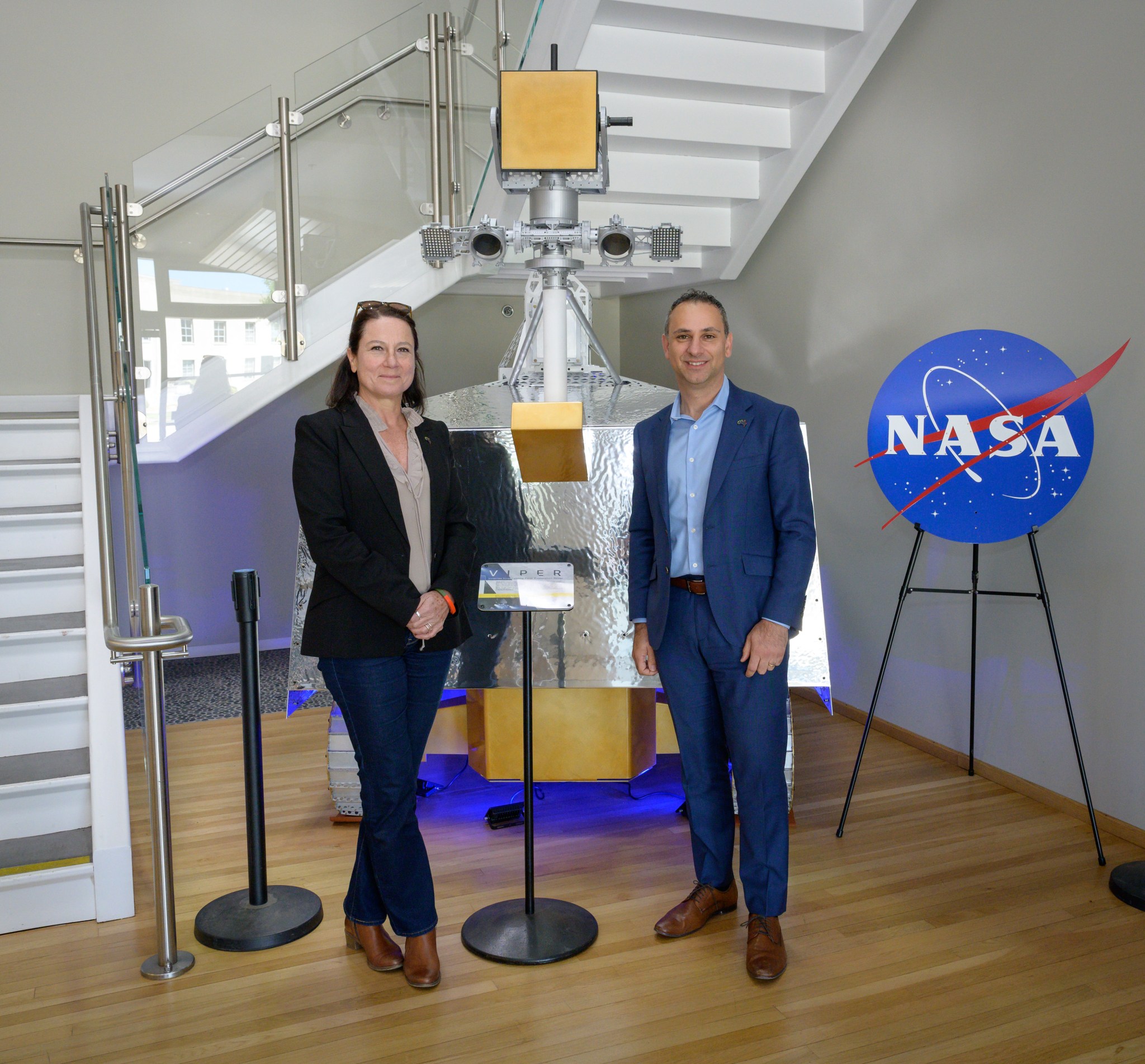
Palermo and Vignelles learned about Ames-led missions supporting NASA’s Artemis program and Moon to Mars objectives, including VIPER, other robotic exploration technologies, and off-planet resource utilization tools. They also toured a few of Ames’ unique facilities that support missions to the Moon, Mars, and beyond, including the Multi Mission Operations Center, Open Mission Control Technologies laboratory, and the Unitary Plan Wind Tunnel.
VIPER will be delivered to Mons Mouton at the Moon’s South Pole in late-2024 to map and explore the characteristics of the lunar soil up-close, including the location of any water or other potential resources that could be used to sustain future human missions. The ASA is planning to send a small semi-autonomous rover to the Moon as soon as 2026 as part of its Trailblazer program under its Moon to Mars initiative. The ASA rover intends to collect lunar regolith from the Moon and deliver it to a NASA-operated system on a commercial lunar lander, which will attempt to extract oxygen from the sample – demonstrating our ability to generate products using local materials, a process known as in-situ resource utilization.
Australia is one of many nations that have signed the Artemis Accords, which describe a shared vision for principles, grounded in the Outer Space Treaty of 1967, to create a safe and transparent environment which facilitates exploration, science, and commercial activities for all of humanity to enjoy.
“We appreciate Australia as one of our strongest allies and partners as we return to the Moon and look deeper into our solar system to explore Mars,” said Eugene Tu, Ames center director. “From robotics to quantum computing, NASA Ames is proud of our partnership with the people of Australia and we look forward to all we will achieve together.”
What is the Vertical Motion Simulator?The world's largest flight simulator for high-fidelity testing of new and experimental aircraft and spacecraft designs
by Abigail Tabor
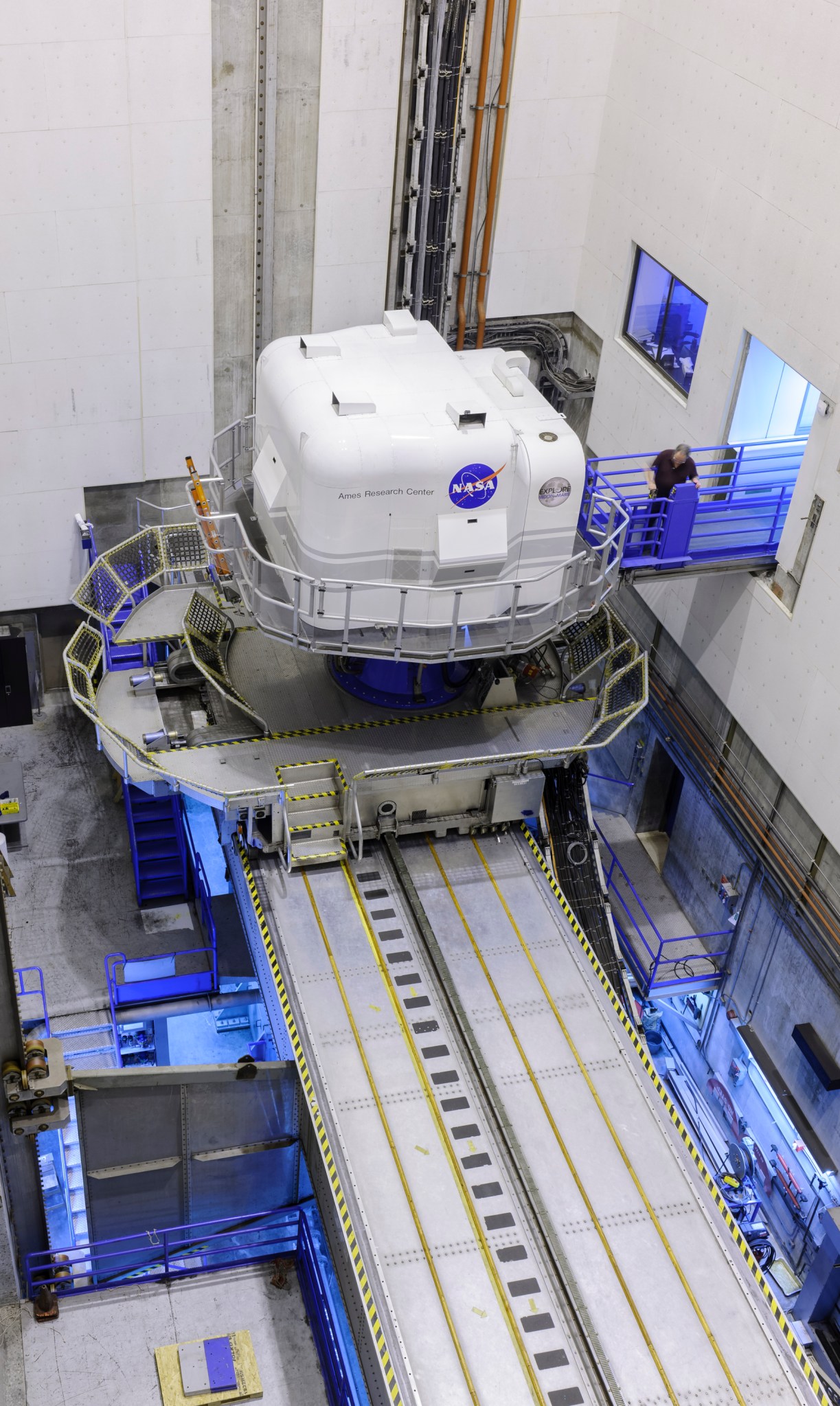
Driven by powerful motors and a system of hydraulics, NASA’s VMS (Vertical Motion Simulator) smoothly moves as much as 60 feet vertically and 40 feet horizontally within a 10-story tower at the agency’s Ames Research Center in California’s Silicon Valley.
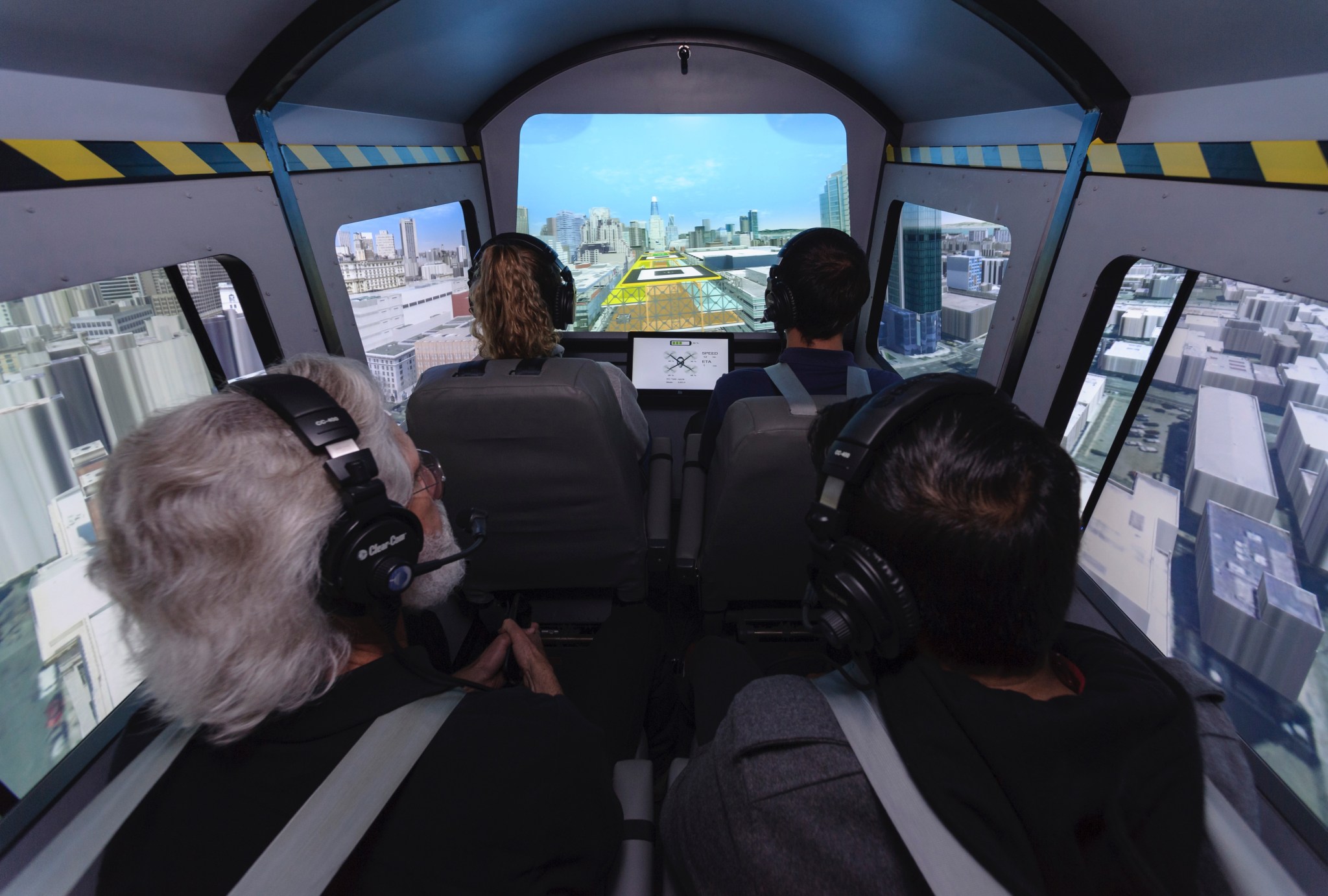
The VMS offers an unequaled range of motion in all six degrees of freedom – the six ways that an aircraft or spacecraft moves. There are three translational degrees of freedom (forward/backward, up/down, and left/right) and three rotational degrees of freedom (roll right/left, pitch up/down, and yaw clockwise/counterclockwise). This range of motion allows the VMS to accurately simulate all phases of flight, including takeoff, cruise, and landing.
For a given simulation, the VMS motion platform uses one of five interchangeable cabs, which can be configured to recreate the cockpit of any aerospace vehicle – whether it exists today or is being designed for the future.
Designers and pilots of fighter jets, tilt-rotor aircraft, helicopters, the space shuttle, lunar lander, airships, and more have had the chance to test out their vehicles before taking to the skies.
A Life-Like Experience
The motion of the VMS is based on aircraft math models developed using real data from actual aircraft, wind tunnels, and computational fluid dynamic analysis. This lets the VMS generate precise accelerations that result in a near-flight-like experience for pilots and passengers. Simulators with no motion or limited motion are useful for some development and training, but for the highest fidelity experience before actual flight, the VMS is the best option.
The out-the-window graphics – the computer-generated images that simulate the outside world and provide visual cues for the pilot – are highly customizable. The VMS maintains many representations of locations in the United States and abroad.
Three-dimensional models, such as aircraft, ground vehicles and buildings, are included in the graphics, as well as simulations of various weather and lighting conditions. All the scenes can be modified, and new ones are created according to project needs.
Flexibility for a Wide Variety of Vehicles
Researchers perform engineering studies at the VMS to evaluate the effectiveness of flight control systems, rapidly test changes to aircraft design, or evaluate different flight-control algorithms. Aerospace companies, government agencies, as well as other industries use the VMS for developing aircraft or transportation concepts, and then later for flight control design refinements and to evaluate handling qualities.
Flexibility in both hardware and software allows NASA’s VMS to simulate the flight of any aerospace vehicle. The flight controls, flight instruments and aircraft seats of each cab can be modified for different studies.
Powerful computers and custom-designed systems enable the rapid development of high-fidelity, real-time simulation. This allows researchers to test handling qualities and tease out design problems and potential flaws before a vehicle is built, before it flies and, perhaps, before it lands on the Moon.
Air Taxis and Urban Transportation Concepts
Since the cabs are reconfigurable, all hardware and software can be customized for new projects. Over the decades, the VMS has simulated a wide variety of vehicles, from fixed-wing, rotorcraft, and vertical takeoff and landing aircraft, to newly designed and conceived experimental craft, such as NASA’s X-59 Quiet Supersonic Technology aircraft.
The VMS also supports research to create a safe and efficient air transportation system, which could involve passenger-carrying air taxis operating above populated areas, dubbed Advanced Air Mobility. VMS engineers and researchers are supporting aviation activities with the Federal Aviation Administration, or FAA, NASA’s National Campaign project, and the NASA Revolutionary Vertical Lift project by determining which automation tools can better help pilots, as well as studying ride and handling qualities.
Lunar Landers, from Design to Training
The VMS is primarily a research simulator, where designers can test out their ideas and optimize the performance of aircraft and spacecraft. The VMS was originally designed to support research in the development of new aircraft concepts here on Earth – but it was also used to model vehicle docking maneuvers with the International Space Station in near Earth orbit. It can even be a valuable training simulator, as was the case for the Space Shuttle Program. Every NASA shuttle pilot received training in the VMS, and future Moon-bound astronauts may as well.
With virtually no atmosphere and only one-sixth the gravity of Earth, the Moon will feel very different to a pilot behind the controls. As new lunar lander designs are developed, the VMS can perform testing and evaluation. The lunar lander cab features hand controllers that might be used in future lunar lander designs, and the simulator provides realistic visual and motion cues to the pilot.
The VMS already has simulated two types of lunar flight – that of the Apollo Lunar Module and of the Altair, a lunar lander concept vehicle explored in the 2000s. More recently, NASA’s Human Landing System program partners analyzed and improved early lander concepts to deliver humans to the lunar surface as part of NASA’s Artemis missions.
The motion of the VMS in those six degrees of freedom is based on real data from research on aircraft handling. This lets the VMS generate precise accelerations that result in a near-flight-like experience for pilots. Simulators with no motion or only tilting motion are useful for some development and training, but for the highest fidelity experience before actual flight, the VMS is the best option.
The out-the-window graphics – the computer-generated images that simulate the outside world and provide visual cues for the pilot – are highly customizable. The VMS maintains many representations of geographic locations in the United States and abroad.
Three-dimensional models, such as aircraft, ground vehicles and buildings, are included in the graphics, and various weather and light conditions can be simulated. All the scenes can be modified, and new ones are created according to project needs.
MITTIC Space Tank Winners Visit NASA Ames and Silicon Valley
The final phase of the NASA Minority University Research and Education Project (MUREP) Innovation and Tech Transfer Idea Competition (MITTIC) is complete. On May 17 and 18, teams Piezo Pace from the University of St. Thomas in Houston and LazerSense Solutions from the University of Massachusetts Boston were invited to NASA Ames for the MITTIC Ames Experience in Silicon Valley. This phase of MITTIC concentrated on further developing the knowledge and networks necessary to help members of the winning teams build their business acumen.
Designed to be a mix of inspiration, knowledge acquisition and networking opportunities, the MITTIC Ames Experience is a two-day, in-person experience that builds upon the introduction to NASA’s technology, business, and partnership activities from the Fall and Spring Space Tank competitions at NASA’s Johnson Space Center in Houston.
On the first day, the students were introduced to various members of the NASA Ames community such as Dr. Eugene Tu, Ames’ Center Director, and Dr. Jacob Cohen, Ames’ Chief Scientist, who gave presentations that provided an overview of the out-of-the-box thinking that has resulted in 80-plus years of innovation at Ames. Students networked with members of the Ames community and the Ames Tech Transfer team who provided additional information about NASA’s patent process for taking NASA technologies to the marketplace. In the afternoon, the students toured the world’s largest wind tunnel section, and the TechEdSat lab. Members of the mission team talked about the development of the CubeSat technology and the ongoing work to improve small satellite technology. An additional highlight of the first day was the tour of RMV Technology Group, a small, minority-owned company located at the NASA Research Park adjacent to NASA Ames. The founders of the company showed off their labs and more importantly, provided practical information about the dos and don’ts of starting a small business.
The second day began with a tour of NASA’s High-End Computing Facility where NASA is advancing computer technology and processing data collected from sensors on Earth and in space and turning those into computational fluid dynamics visualizations. To highlight the innovation and entrepreneurial space in Silicon Valley, the teams visited Lucid Motors Headquarters in Newark. There the students were provided an exclusive look into the company’s electric vehicle technology. Derek Jenkins, Lucid vice president of Design, literally took the covers off as he talked about the company’s design philosophy and prototype development. The company also provided the students a networking opportunity with members of their various departments from manufacturing to software development. After returning to Ames, the teams engaged in a discussion with Peter Leroe-Munoz, General Counsel and senior vice president, Technology and Innovation for the Silicon Valley Leadership Group, an industry trade group representing more than 250 companies in Silicon Valley. Peter provided perspective on the culture of innovation and entrepreneurship in Silicon Valley and his insights into the future of technology. NASA astronaut, Dr. Yvonne Cagle, provided a fitting end to the MITTIC Ames Experience in Silicon Valley. She regaled the students with her life story and her experiences as a medical doctor and a NASA astronaut. Her inspirational talk encouraged the students to be bold, true to themselves, and to reach for their future.
“The MITTIC Ames Experience in Silicon Valley is one part of the MITTIC program’s ongoing engagement with students at minority-serving institutions to develop a new generation of entrepreneurs,” said Misty Moore, MITTIC Activity Manager. “MITTIC is committed to providing its participants with ongoing opportunities to develop their business acumen through its network of subject matter experts at NASA and the business community.”
Each year, MITTIC holds two Space Tank competitions – one in the Fall and one in the Spring. Teams from across the country submit proposals consisting of a technical paper and a pitch video. Team proposals are vetted by a panel of NASA and industry subject matter experts. Selected teams are invited to Johnson Space Center to get an introduction to NASA technology, start a network of business and technology subject matter experts, refine their business concepts, and pitch their ideas in the Space Tank competition.
For the 2022-2023 competition season, the teams selected for the fall Space Tank were: Team Piezo Pace from the University of St. Thomas in Houston; Team Li2+Sen from the University of Puerto Rico-Rio Pedras; Team Xenergy from Xavier University of Louisiana; Team PowersIO from Hampton and Tufts Universities; Team Spectacle from Hampton University and Boston College; and Team Frankenstein’s Gear representing City College of San Francisco, College of Marin, East Los Angeles College, and California State University-Northridge. In the spring, the teams were LazerSense Solutions from the University of Massachusetts-Boston; Team Longhorn Innovators from the University of Texas at Austin; Team ASAPA from FayePeville State University; Team Aquarius Solutions from Lonestar College System; Team AstroNOTS from the University of Houston-Clear Lake; Team BREATHE from Santa Monica College; and Team Panther from Hartnell College. Each team received up to $5,000 for being selected for the competition, and the winning Fall and Spring teams received an additional $10,000 to further their business concept. Members of all participating teams are eligible for eight exclusive NASA MITTIC internships.
The MITTIC team continues to build student opportunities such as the MITTIC exclusive internships and a MITTIC hack-a-thon for HBCU scholars who are selected by the White House Initiative for Historically Black Colleges and Universities for the fall 2023 HBCU Week Conference in Washington, D.C. Proposals for the Fall MITTIC competition will be accepted beginning August 7.
CAPSTONE Captures Moon Shot and Successfully Tests Navigation Technology
by Abigail Tabor
CAPSTONE successfully tested a navigation technology akin to Earth’s GPS for the first time in May, advancing a capability that could help future space missions more efficiently navigate at the Moon. The spacecraft also captured its first images of the Moon, showing the lunar surface near the Moon’s North Pole as CAPSTONE made a close approach to the Moon on May 3.
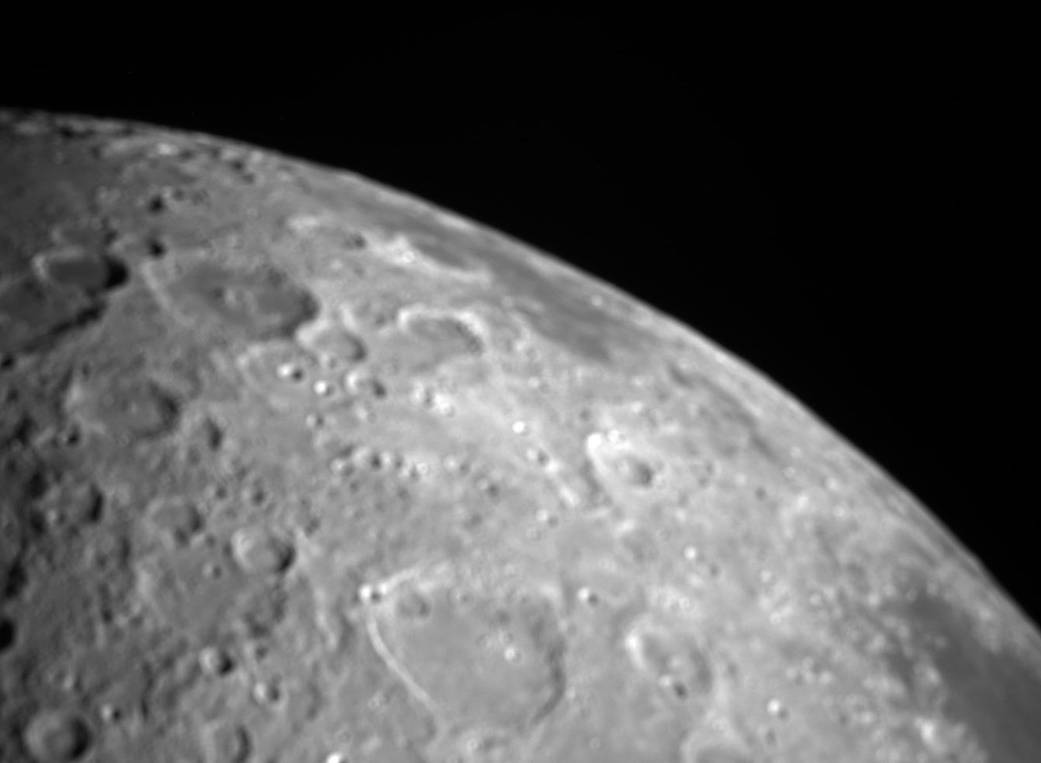
CAPSTONE, short for Cislunar Autonomous Positioning System Technology Operations and Navigation Experiment, is a microwave oven-sized CubeSat flying a unique, elliptical orbit at the Moon that will be used by Gateway. The test of the mission’s CAPS technology involved two spacecraft: CAPSTONE and NASA’s Lunar Reconnaissance Orbiter (LRO). During the May 9 experiment, CAPSTONE sent a signal to LRO designed to measure the distance and relative velocity between the two spacecraft. LRO then returned the signal to CAPSTONE, where it was converted into a measurement. The test proved the ability to collect measurements that will be utilized by CAPS software to determine the positioning of both spacecraft. This capability could provide autonomous onboard navigation information for future lunar missions.
In addition to the successful CAPS test, CAPSTONE achieved another mission objective to fly the near-rectilinear halo orbit for at least six months. This marks the end of the spacecraft’s primary mission, and CAPSTONE will continue flying in the orbit and testing onboard technologies for up to a year during its enhanced mission phase.
NASA and its Partners Achieve Fastest Space-to-Ground Laser Communications Link
by Frank Tavares
On April 28, NASA and its partners achieved another major milestone in the future of space communications – achieving 200 gigabit per second (Gbps) throughput on a space-to-ground optical link between a satellite in orbit and Earth, the highest data rate ever achieved by optical communications technology.
These data rates are made possible by using laser communications, which packs information into the oscillations of light waves in lasers, instead of using radio waves like most space communications systems.
This communications link was achieved by the TeraByte InfraRed Delivery (TBIRD) system, carried into orbit by NASA’s Pathfinder Technology Demonstrator 3 (PTD-3) satellite, and surpasses the previous 100 Gbps milestone previously demonstrated by the same team in June 2022. With this speedy connection, TBIRD can send down multiple terabytes of test data to Earth during a single six-minute pass over a ground station. A single terabyte is the equivalent of about 500 hours of high-definition video.
“Achieving 100 Gbps in June was groundbreaking, and now we’ve doubled that data rate – this capability will change the way we communicate in space,” said Beth Keer, the mission manager for TBIRD at NASA’s Goddard Space Flight Center in Greenbelt, Maryland. “Just imagine the power of space science instruments when they can be designed to fully take advantage of the advancements in detector speeds and sensitivities, furthering what artificial intelligence can do with huge amounts of data. Laser communications is the missing link that will enable the science discoveries of the future.”
Currently, the most commonly used technology by NASA for space communications is radio, sending data with similar methods to how radio broadcasts are sent to a car radio or how a cell phone communicates with a cell tower. With NASA’s sights set on a long-term presence on the Moon and future missions to Mars, more efficient communications are essential for smooth mission operations and effective science.
The ultra-high-speed capabilities of laser communications, also known as optical communications, will make it possible to pack more data into each transmission from space. More information about whatever a scientific instrument may be studying – whether that be imagery of another world, data about space radiation, or something else – means there’s more data for scientists on Earth to study, leading to the discoveries that will be needed to live and work on other worlds.
CubeSats like PTD-3 are ideal spacecraft for testing communications technologies due to their cost-effectiveness and small size. PTD-3 is only about the size of two stacked cereal boxes, and the TBIRD payload it carries is no larger than the average tissue box. PTD-3 was built and is operated by Terran Orbital of Irvine, California, for NASA. The TBIRD payload was designed and built by Massachusetts Institute of Technology Lincoln Laboratory (MIT-LL) of Lexington, Massachusetts.
PTD-3 was launched into orbit on SpaceX’s Transporter-5 rideshare mission from NASA’s Kennedy Space Center in Florida, and synchronized with Earth’s orbit around the Sun in such a way that the small satellite entered a “fixed” position relative to the Sun. That means PTD-3 is able to pass over the ground station on Earth at the same time twice each day so TBIRD can test this space-to-ground communications link.
TBIRD’s data transmission milestone was made possible by collaborations across NASA centers and beyond. NASA’s Goddard Space Flight Center in Greenbelt, Maryland developed the TBIRD mission and concept in partnership with MIT-LL while NASA’s Ames Research Center in California’s Silicon Valley developed and manages the PTD-3 program and mission.
In addition to building the PTD-3 spacecraft, Terran Orbital worked with MIT Lincoln Laboratory to integrate the TBIRD payload onto the spacecraft, managed the launch, and operates the spacecraft. The ground station is located at the Optical Communications Test Laboratory (OCTL) at NASA’s Jet Propulsion Laboratory (JPL) in Southern California. OCTL currently supports multiple optical communications missions and was modified to accommodate the TBIRD system requirements and unique TBIRD communications ground hardware provided by MIT Lincoln Laboratory.
With TBIRD’s successful demonstration of laser communications as a practical tool for transferring data from space to ground, future NASA missions can integrate this technology into their designs. Data from space has never had a speedier path back to Earth than this.
This technology demonstration was a collaborative partnership between NASA’s Space Communications and Navigation (SCaN) program in NASA’s Space Operations Mission Directorate and the Small Spacecraft Technology program in NASA’s Space Technology Mission Directorate. Development of the TBIRD technology and payload were funded by SCaN, and the PTD-3 demonstration mission, part of the PTD mission series, was funded by the Small Spacecraft Technology program.
NASA's Lunar Rover Team Unboxes Hydrogen-Seeking Instrument
by Frank Tavares
An instrument capable of helping locate water under the lunar surface has arrived at NASA’s Johnson Space Center in Houston, where it will be installed on NASA’s next lunar rover set to land on Mons Mouton near the Moon’s South Pole in late 2024. This is the third instrument to arrive as a team of engineers assemble and integrate NASA’s VIPER—short for Volatiles Investigating Polar Exploration Rover—in preparation for delivery to Astrobotic through NASA’s Commercial Lunar Payload Services initiative.
The Neutron Spectrometer System, designed at NASA’s Ames Research Center in California’s Silicon Valley in partnership with Lockheed Martin Advanced Technology Center, is a part of VIPER’s suite of instruments that will allow it to study the distribution of water and other potential resources on the Moon. The system targets its search for hydrogen, the element that’s the telltale sign of water, or H2O.
The Moon’s surface is always radiating particles called neutrons. When neutrons collide with something similar to them in mass – like a hydrogen atom – the neutrons quickly lose energy. Its ability to detect that change, means the Neutron Spectrometer System plays a big role in mapping potential sites where water may lie up to three feet below the surface and helping scientists decide where to drill in search for water.
The Neutron Spectrometer System has undergone extensive testing in both laboratory and field deployments. Two other VIPER science instruments, the Near Infrared Volatile Spectrometer Subsystem and the Mass Spectrometer Observing Lunar Operations, also completed testing and have arrived at Johnson, where they too will be integrated into the VIPER rover over the coming months. The Regolith and Ice Drill for Exploring New Terrains is still undergoing testing and will arrive at Johnson for integration later this year as well.
“Within our team, we often describe this system with the phrase ‘born ready.’ And when VIPER lands, it will be, thanks to the years of dedicated development and testing that made it possible,” said Rick Elphic, NSS principal investigator at Ames. “The shipment from Ames and delivery to Johnson is the continuation of the long journey to the surface of the Moon.”
Vance Oyama, Searching for Life in Our Solar System
Vance I. Oyama holds a readout from the gas chromatograph in the life detection laboratory at NASA’s Ames Research Center in this picture from April 22, 1965. Oyama had a long career at NASA, during which he served as Life Detection Systems branch chief; he examined lunar soil samples and also helped design experiments for the Viking Mars Landers. Both he and his brother Jiro pioneered new areas of life sciences research at Ames.Visit the Asian American, Native Hawaiian, and Pacific Islander Heritage Month gallery.
In Memoriam …
Former Lead Position Classification Specialist for NASA Don Schilling Dies
Don Schilling, a longtime Ames employee in the Personnel/Human Resources organization, passed away on January 22 in Los Gatos. Don was born in Los Angeles in 1933. A vivid Hollywood memory of his childhood was of watching the filming of the burning of Atlanta scene for “Gone With The Wind.” In 1940, the family relocated to the Santa Cruz Mountains village of Laurel, and then moved again to Vallejo, California in early 1942. Here his father worked at the Mare Island Naval Shipyard and his mother was a neighborhood blackout warden and USO volunteer during World War II.
While in school he developed a lifelong passion for sports. He was a member of the 1948 Vallejo City Champion baseball team and at Vallejo High School ran the 440-yard relay with future author Ernest Gaines, who wrote “A Lesson Before Dying” and became a MacArthur Foundation Fellow. Don graduated from Vallejo High School in 1951 and San Jose State in 1955 where he received a BA in English.
He married fellow Vallejo resident Jenevieve Wallestad in 1956. A few months after graduating from college, he enlisted in the Air Force. Don was stationed in Taipei, Taiwan when the Formosa Crisis of 1958 unfolded. As the Communist Chinese shelled the island, he worked with Air Task Force 13 helping design and build military airfields to defend the island from invasion. In 1961, he was awarded the Armed Forces Expeditionary Medal for his service in Taiwan.
In March of 1960, Don was hired as an Ames civil servant in the personnel department. His first duties included editing the Ames Astrogram. When Ames needed to expand its technical capability to support NASA’s Mercury, Gemini, and Apollo programs, Don was part of the Ames/NASA team traveling to colleges up and down the west coast, recruiting the best and the brightest students. As that effort peaked later in the 1960s, he went on to recruit staff for Ames’ Pioneer spacecraft program, which eventually sent historic probes to Venus, Jupiter, and Saturn by the mid 1970s.
Something he was especially proud of was a program he developed to identify and hire talented minority applicants at Ames prior to the agency’s Equal Employment Opportunity Program introduced in the 1970s.
For decades, he was one of the primary position classification specialists in Personnel. In this role, he developed the ability to understand complex scientific and technical objectives as well the subtle nuances of civil service personnel practices. This combination allowed him to help Ames staff effectively apply their accomplishments to key performance requirements, which in turn provided a navigable pathway to career advancement within NASA.
He participated in NASA-wide efforts to improve performance evaluations, and his skills were widely recognized throughout the agency. In 1986, he served for a time as acting chief of the Dryden Flight Research Facility Personnel Office. By the late 1980s, he was being tapped to resolve difficult personnel issues for other NASA centers and by the 1990s was serving tours of duty at NASA Headquarters as a lead position classification specialist for the agency. He retired in 1998 after serving NASA for 38 years. His eldest son Ed Schilling, who also worked at Ames, often met employees who remembered Don and told how he had provided insight and advice at key points in their careers.
During retirement, he enjoyed reading about American history, taking his vintage Porsche Speedster to car shows, editing newsletters for the Seniors In Retirement organization, following San Jose State sports teams, and visiting with his grandchildren.
His deep love of music encouraged him to develop a strong tenor singing voice. He was a member of church choirs in Vallejo and Los Gatos, and won a position with the West Valley Masterworks Chorale in the early 1980s. He sang with this prestigious group in a performance of Verdi’s Requiem at New York’s Carnegie Hall in 1990. He and his wife sang with another local amateur group until early 2020.
Don is survived by his wife Jenevieve, to whom he was married for almost 67 years. His family includes four children, four grandchildren, and two great grandchildren.
Aerodynamics Specialist and Former Chief of Research Facilities Engineering at Ames Paul Radach Dies
Paul Radach passed away on May 5, in Reno, Nevada at the age of 101. Paul’s life included his BSME degree from Washington State University in 1944, and his research and teaching fellowship at WSU in l943-44.
He served as an aerodynamics specialist in the Navy from 1944-1946 and studied fluid mechanics and industrial engineering, while attending graduate school at Stanford University.
Paul was president of Puratech, Inc. in Campbell, California and chief of Research Facilities Engineering at NASA Ames.
He retired from NASA Ames 1973. Two years later, he accepted a position with the U.S. Department of Energy magneto hydrodynamics (MHD) in Butte, Montana.
Paul and his wife, Ginny, (also a former NASA employee) enjoyed skiing until seven years ago. He also is survived by two sons, Craig Radach of Markleville, California and Douglas Radach of Tetonia, Idaho.
















